#for how humans have changed the landscape of the state itself
Note
For the music prompt: 10
I got the song "Gilded Lily" by Cults.
youtube
Did I stretch my interpretation of this song as an excuse to write angst about Hollywood!Cali? ...Maybe a bit.
Anyway, heavy angst ahead and TW for fun stuff like alcoholism, drugs, disordered eating, flashbacks, religious trauma, and possible implied body horror? idk. This fic goes to dark places so don't proceed if you're not cool with that.
Every city's got a graveyard
The service bought and paid for
Now I'm sleeping in the backyard
Passing out as night turns into day
Haven't I given enough, given enough?
Haven't I given enough, given enough?
The newspapers rave about the mysterious and alluring Cal Fremont, Hollywood's golden boy. He's got the power and charm to sway audiences. He's got a hypnotizing gaze that sells out theaters. He's in film after film– sometimes front and center, other times in the background, but he always steals the show. The years go by and his youthful beauty doesn’t fade. (It’s almost unnerving.)
His life is an endless parade of agents and studios. They say he's "perfect," but never hesitate to tell him how much more perfect he could be.
But by now, he's used to it.
You have to behave yourself, the “holy” men said. You’re supposed to set a good example. You’ve been chosen by God for a higher purpose. Give up your sinful ways and follow our rules. Work hard. Keep your head down. Don’t fight back.
The studio makes him sign a “morality” clause. Cal makes a long list of promises that he has no intention of keeping. He plays the perfect “boy next door” by day, whenever the cameras are on. It’s never enough to shut the rumors down. Cal has never been one to keep quiet and play by the rules. How can he, when the ones enforcing the rules have always been the ones who harm him the most?
It was exciting at first. People were coming from all over the world because he had something valuable: gold. But soon the excitement turned to fear. How far would they go to get what they wanted? Would they ever listen if he told them how much it hurt? Or would they forget about him the second they found something better?
“He’s our most profitable star this year,” they say. He’s bringing the studio millions of dollars. They’re working him to the bone with long days, hot lights, and toxic makeup. He’s given them all of himself, but they still demand more. How much more can he possibly give without giving up everything?
The rivers stopped flowing to the ocean. They were rerouted, dammed up for agriculture, channeled into aqueducts, their natural banks replaced with cold concrete.
Some tabloid makes a snide comment about Cal's weight. He stops eating in front of people, replacing his cravings for food with a habit of binge drinking. No one cares. They just tell him how much better he looks now. They can’t see that he’s wasting away slowly. Even if they could, they wouldn’t care as long he was making them money.
Vast fields of mustard bloom yellow every spring. It's beautiful, but it doesn't belong there. It's an invasive species, choking out the vibrance of the native flowers.
Cal dyes his hair blonde to look the part. His agents tell him that it makes him look more "all-American." Every time he walks by a mirror, he checks the roots obsessively for any signs of his natural dark hair growing back. That would ruin the illusion, as they say. He tells himself he looks better this way anyway. Maybe if he repeats it often enough, he’ll actually believe it.
The logging companies cut the redwoods. The beauty of the forests meant nothing to them; they saw the trees as profit, and nothing more. Sure, they might grow back, but will it ever be the same?
They decide that his nose is "too wide," whatever that means. They give him some pills to take, and he wakes up days later in a daze with bandages on his face. When the swelling goes down, he looks at his face in the mirror and barely recognizes himself. They say he’s even more beautiful now.
But no matter how beautiful he is, no matter how much he gives, no matter how he acts… he’ll never be good enough. They’ll always want
More
More
MORE.
But he has nothing more to give.
Cal Fremont causes one last stir in Hollywood when he disappears under mysterious circumstances. The tabloids have a field day. Some say he overdosed; others say he died by his own hand. Others swear they’ve seen him in the decades since, seemingly having never aged a day.
#wttt california#mur writes#mur drabbles#angst because we love cali angst#i swear i'll write a happy one next#i just think a lot about how what hollywood does to people is a perfect metaphor#for how humans have changed the landscape of the state itself#so i wanted to explore that a bit
16 notes
·
View notes
Text

E.2 What do eco-anarchists propose instead of capitalism?
Given what eco-anarchists consider to be the root cause of our ecological problems (as discussed in the last section), it should come as no surprise that they think that the current ecological crisis can only be really solved by eliminating those root causes, namely by ending domination within humanity and creating an anarchist society. So here we will summarise the vision of the free society eco-anarchists advocate before discussing the limitations of various non-anarchist proposals to solve environmental problems in subsequent sections.
However, before so doing it is important to stress that eco-anarchists consider it important to fight against ecological and social problems today. Like all anarchists, they argue for direct action and solidarity to struggle for improvements and reforms under the current system. This means that eco-anarchism “supports every effort to conserve the environment” in the here and now. The key difference between them and environmentalists is that eco-anarchists place such partial struggles within a larger context of changing society as a whole. The former is part of “waging a delaying action against the rampant destruction of the environment” the other is “a create movement to totally revolutionise the social relations of humans to each other and of humanity to nature.” [Murray Bookchin, Toward an Ecological Society, p. 43] This is one of the key differences between an ecological perspective and an environmental one (a difference discussed in section E.1.2). Finding ways to resist capitalism’s reduction of the living world to resources and commodities and its plunder of the planet, our resistance to specific aspects of an eco-cidal system, are merely a starting point in the critique of the whole system and of a wider struggle for a better society. As such, our outline of an ecological society (or ecotopia) is not meant to suggest an indifference to partial struggles and reforms within capitalism. It is simply to indicate why anarchists are confident that ending capitalism and the state will create the necessary preconditions for a free and ecologically viable society.
This perspective flows from the basic insight of eco-anarchism, namely that ecological problems are not separate from social ones. As we are part of nature, it means that how we interact and shape with it will be influenced by how we interact and shape ourselves. As Reclus put it “every people gives, so to speak, new clothing to the surrounding nature. By means of its fields and roads, by its dwelling and every manner of construction, by the way it arranges the trees and the landscape in general, the populace expresses the character of its own ideals. If it really has a feeling for beauty, it will make nature more beautiful. If, on the other hand, the great mass of humanity should remain as it is today, crude, egoistic and inauthentic, it will continue to mark the face of the earth with its wretched traces. Thus will the poet’s cry of desperation become a reality: ‘Where can I flee? Nature itself has become hideous.’” In order to transform how we interact with nature, we need to transform how we interact with each other. “Fortunately,” Reclus notes, “a complete alliance of the beautiful and the useful is possible.” [quoted by Clark and Martin (eds.) , Anarchy, Geography, Modernity, p. 125 and p. 28]
Over a century later, Murray Bookchin echoed this insight:
“The views advanced by anarchists were deliberately called social ecology to emphasise that major ecological problems have their roots in social problems — problems that go back to the very beginnings of patricentric culture itself. The rise of capitalism, with a law of life based on competition, capital accumulation, and limitless growth, brought these problems — ecological and social — to an acute point; indeed, one that was unprecedented in any prior epoch of human development. Capitalist society, by recycling the organise world into an increasingly inanimate, inorganic assemblage of commodities, was destined to simplify the biosphere, thereby cutting across the grain of natural evolution with its ages-long thrust towards differentiation and diversity.
“To reverse this trend, capitalism had to be replaced by an ecological society based on non-hierarchical relationships, decentralised communities, eco-technologies like solar power, organic agriculture, and humanly scaled industries — in short, by face-to-face democratic forms of settlement economically and structurally tailored to the ecosystems in which they were located.” [Remaking Society, pp. 154–5]
The vision of an ecological society rests on the obvious fact that people can have both positive and negative impacts on the environment. In current society, there are vast differences and antagonisms between privileged whites and people of colour, men and women, rich and poor, oppressor and oppressed. Remove those differences and antagonisms and our interactions with ourselves and nature change radically. In other words, there is a vast difference between free, non-hierarchical, class, and stateless societies on the one hand, and hierarchical, class-ridden, statist, and authoritarian ones and how they interact with the environment.
Given the nature of ecology, it should come as no surprise that social anarchists have been at the forefront of eco-anarchist theory and activism. It would be fair to say that most eco-anarchists, like most anarchists in general, envision an ecotopia based on communist-anarchist principles. This does not mean that individualist anarchists are indifferent to environmental issues, simply that most anarchists are unconvinced that such solutions will actually end the ecological crisis we face. Certain of the proposals in this section are applicable to individualist anarchism (for example, the arguments that co-operatives will produce less growth and be less likely to pollute). However, others are not. Most obviously, arguments in favour of common ownership and against the price mechanism are not applicable to the market based solutions of individualist anarchism. It should also be pointed out, that much of the eco-anarchist critique of capitalist approaches to ecological problems are also applicable to individualist and mutualist anarchism as well (particularly the former, as the latter does recognise the need to regulate the market). While certain aspects of capitalism would be removed in an individualist anarchism (such as massive inequalities of wealth, capitalist property rights as well as direct and indirect subsidies to big business), it is still has the informational problems associated with markets as well as a growth orientation.
Here we discuss the typical eco-anarchist view of a free ecological society, namely one rooted in social anarchist principles. Eco-anarchists, like all consistent anarchists advocate workers’ self-management of the economy as a necessary component of an ecologically sustainable society. This usually means society-wide ownership of the means of production and all productive enterprises self-managed by their workers (as described further in section I.3). This is a key aspect of making a truly ecological society. Most greens, even if they are not anarchists, recognise the pernicious ecological effects of the capitalist “grow or die” principle; but unless they are also anarchists, they usually fail to make the connection between that principle and the hierarchical form of the typical capitalist corporation. The capitalist firm, like the state, is centralised, top-down and autocratic. These are the opposite of what an ecological ethos would suggest. In contrast, eco-anarchists emphasise the need for socially owned and worker self-managed firms.
This vision of co-operative rather than hierarchical production is a common position for almost all anarchists. Communist and non-communist social anarchists, like mutualists and collectivists, propose co-operative workplaces but differ in how best to distribute the products produced. The former urge the abolition of money and sharing according to need while the latter see income related to work and surpluses are shared equally among all members. Both of these systems would produce workplaces which would be under far less pressure toward rapid expansion than the traditional capitalist firm (as individualist anarchism aims for the abolition of rent, profit and interest it, too, will have less expansive workplaces).
The slower growth rate of co-operatives has been documented in a number of studies, which show that in the traditional capitalist firm, owners’ and executives’ percentage share of profits greatly increases as more employees are added to the payroll. This is because the corporate hierarchy is designed to facilitate exploitation by funnelling a disproportionate share of the surplus value produced by workers to those at the top of the pyramid (see section C.2) Such a design gives ownership and management a very strong incentive to expand, since, other things being equal, their income rises with every new employee hired. [David Schweickart, Against Capitalism, pp. 153–4] Hence the hierarchical form of the capitalist corporation is one of the main causes of runaway growth as well as social inequality and the rise of big business and oligopoly in the so-called “free” market.
By contrast, in an equal-share worker co-operative, the addition of more members simply means more people with whom the available pie will have to be equally divided — a situation that immensely reduces the incentive to expand. Thus a libertarian-socialist economy will not be under the same pressure to grow. Moreover, when introducing technological innovations or facing declining decline for goods, a self-managed workplace would be more likely to increase leisure time among producers rather than increase workloads or reduce numbers of staff.
This means that rather than produce a few big firms, a worker-controlled economy would tend to create an economy with more small and medium sized workplaces. This would make integrating them into local communities and eco-systems far easier as well as making them more easily dependent on green sources of energy. Then there are the other ecological advantages to workers’ self-management beyond the relative lack of expansion of specific workplaces and the decentralisation this implies. These are explained well by market socialist David Schweickart:
“To the extent that emissions affect the workers directly on the job (as they often do), we can expect a self-managed firm to pollute less. Workers will control the technology; it will not be imposed on them from without.
“To the extent that emissions affect the local community, they are likely to be less severe, for two reasons. Firstly, workers (unlike capitalist owners) will necessarily live nearby, and so the decision-makers will bear more of the environmental costs directly. Second … a self-managed firm will not be able to avoid local regulation by running away (or threatening to do so). The great stick that a capitalist firm holds over the head of a local community will be absent. Hence absent will be the macrophenomenon of various regions of the country trying to compete for firms by offering a ‘better business climate’ (i.e. fewer environmental restrictions).” [Op. Cit., p. 145]
For an ecological society to work, it requires the active participation of those doing productive activity. They are often the first to be affected by industrial pollution and have the best knowledge of how to stop it happening. As such, workplace self-management is an essential requirement for a society which aims to life in harmony with its surrounds (and with itself, as a key aspect of social unfreedom would be eliminated in the form of wage slavery).
For these reasons, libertarian socialism based on producer co-operatives is essential for the type of economy necessary to solve the ecological crisis. These all feed directly into the green vision as “ecology points to the necessity of decentralisation, diversity in natural and social systems, human-scale technology, and an end to the exploitation of nature.” [John Clark, The Anarchist Moment, p. 115] This can only be achieved on a society which bases itself on workers’ self-management as this would facilitate the decentralisation of industries in ways which are harmonious with nature.
So far, all forms of social anarchism are in agreement. However, eco-anarchists tend to be communist-anarchists and oppose both mutualism and collectivism. This is because workers’ ownership and self-management places the workers of an enterprise in a position where they can become a particularistic interest within their community. This may lead to these firms acting purely in their own narrow interests and against the local community. They would be, in other words, outside of community input and be solely accountable to themselves. This could lead to a situation where they become “collective capitalists” with a common interest in expanding their enterprises, increasing their “profits” and even subjecting themselves to irrational practices to survive in the market (i.e., harming their own wider and long-term interests as market pressures have a distinct tendency to produce a race to the bottom — see section I.1.3 for more discussion). This leads most eco-anarchists to call for a confederal economy and society in which communities will be decentralised and freely give of their resources without the use of money.
As a natural compliment to workplace self-management, eco-anarchists propose communal self-management. So, although it may have appeared that we focus our attention on the economic aspects of the ecological crisis and its solution, this is not the case. It should always be kept in mind that all anarchists see that a complete solution to our many ecological and social problems must be multi-dimensional, addressing all aspects of the total system of hierarchy and domination. This means that only anarchism, with its emphasis on the elimination of authority in all areas of life, goes to the fundamental root of the ecological crisis.
The eco-anarchist argument for direct (participatory) democracy is that effective protection of the planet’s ecosystems requires that all people are able to take part at the grassroots level in decision-making that affects their environment, since they are more aware of their immediate eco-systems and more likely to favour stringent environmental safeguards than politicians, state bureaucrats and the large, polluting special interests that now dominate the “representative” system of government. Moreover, real change must come from below, not from above as this is the very source of the social and ecological problems that we face as it divests individuals, communities and society as a whole of their power, indeed right, to shape their own destinies as well as draining them of their material and “spiritual” resources (i.e., the thoughts, hopes and dreams of people).
Simply put, it should be hardly necessary to explore in any great depth the sound ecological and social reasons for decentralising decision making power to the grassroots of society, i.e. to the people who have to live with the decisions being reached. The decentralised nature of anarchism would mean that any new investments and proposed solutions to existing problems would be tailored to local conditions. Due to the mobility of capital, laws passed under capitalism to protect the environment have to be created and implemented by the central government to be effective. Yet the state, as discussed in section E.1, is a centralised structure unsuited to the task of collecting and processing the information and knowledge required to customise decisions to local ecological and social circumstances. This means that legislation, precisely due to its scope, cannot be finely tuned to local conditions (and so can generate local opposition, particularly if whipped up by corporate front organisations). In an eco-anarchist society, decentralisation would not have the threat of economic power hanging over it and so decisions would be reached which reflected the actual local needs of the population. As they would be unlikely to want to pollute themselves or their neighbours, eco-anarchists are confident that such local empowerment will produce a society which lives with, rather than upon, the environment.
Thus eco-communities (or eco-communes) are a key aspect of an ecotopia. Eco-communes, Bookchin argued, will be “networked confederally through ecosystems, bioregions, and biomes” and be “artistically tailored to their naturally surrounding. We can envision that their squares will be interlaced by streams, their places of assembly surrounded by groves, their physical contours respected and tastefully landscaped, their soils nurtured caringly to foster plant variety for ourselves, our domestic animals, and wherever possible the wildlife they may support on their fringes.” They would be decentralised and “scaled to human dimensions,” using recycling as well as integrating “solar, wind, hydraulic, and methane-producing installations into a highly variegated pattern for producing power. Agriculture, aquaculture, stockraising, and hunting would be regarded as crafts — an orientation that we hope would be extended as much as possible to the fabrication of use-values of nearly all kinds. The need to mass-produce goods in highly mechanised installations would be vastly diminished by the communities’ overwhelming emphasis on quality and permanence.” [The Ecology of Freedom, p. 444]
This means that local communities will generate social and economic policies tailored to their own unique ecological circumstances, in co-operation with others (it is important stress that eco-communes do not imply supporting local self-sufficiency and economic autarchy as values in themselves). Decisions that have regional impact are worked out by confederations of local assemblies, so that everybody affected by a decision can participate in making it. Such a system would be self-sufficient as workplace and community participation would foster creativity, spontaneity, responsibility, independence, and respect for individuality — the qualities needed for a self-management to function effectively. Just as hierarchy shapes those subject to it in negative ways, participation would shape us in positive ways which would strengthen our individuality and enrich our freedom and interaction with others and nature.
That is not all. The communal framework would also impact on how industry would develop. It would allow eco-technologies to be prioritised in terms of R&D and subsidised in terms of consumption. No more would green alternatives and eco-technologies be left unused simply because most people cannot afford to buy them nor would their development be under-funded simply because a capitalist sees little profit form it or a politician cannot see any benefit from it. It also means that the broad outlines of production are established at the community assembly level while they are implemented in practice by smaller collective bodies which also operate on an egalitarian, participatory, and democratic basis. Co-operative workplaces form an integral part of this process, having control over the production process and the best way to implement any general outlines.
It is for these reasons that anarchists argue that common ownership combined with a use-rights based system of possession is better for the environment as it allows everyone the right to take action to stop pollution, not simply those who are directly affected by it. As a framework for ecological ethics, the communal system envisioned by social anarchists would be far better than private property and markets in protecting the environment. This is because the pressures that markets exert on their members would not exist, as would the perverse incentives which reward anti-social and anti-ecological practices. Equally, the anti-ecological centralisation and hierarchy of the state would be ended and replaced with a participatory system which can take into account the needs of the local environment and utilise the local knowledge and information that both the state and capitalism suppresses.
Thus a genuine solution to the ecological crisis presupposes communes, i.e. participatory democracy in the social sphere. This is a transformation that would amount to a political revolution. However, as Bakunin continually emphasised, a political revolution of this nature cannot be envisioned without a socio-economic revolution based on workers’ self-management. This is because the daily experience of participatory decision-making, non-authoritarian modes of organisation, and personalistic human relationships would not survive if those values were denied during working hours. Moreover, as mentioned above, participatory communities would be hard pressed to survive the pressure that big business would subject them to.
Needless to say, the economic and social aspects of life cannot be considered in isolation. For example, the negative results of workplace hierarchy and its master-servant dynamic will hardly remain there. Given the amount of time that most people spend working, the political importance of turning it into a training ground for the development of libertarian values can scarcely be overstated. As history has demonstrated, political revolutions that are not based upon social changes and mass psychological transformation — that is, by a deconditioning from the master/slave attitudes absorbed from the current system — result only in the substitution of new ruling elites for the old ones (e.g. Lenin becoming the new “Tsar” and Communist Party aparatchiks becoming the new “aristocracy”). Therefore, besides having a slower growth rate, worker co-operatives with democratic self-management would lay the psychological foundations for the kind of directly democratic political system necessary to protect the biosphere. Thus “green” libertarian socialism is the only proposal radical enough to solve the ecological crisis.
Ecological crises become possible only within the context of social relations which weaken people’s capacities to fight an organised defence of the planet’s ecology and their own environment. This means that the restriction of participation in decision-making processes within hierarchical organisations such as the state and capitalism firms help create environmental along with social problems by denying those most affected by a problem the means of fixing it. Needless to say, hierarchy within the workplace is a prerequisite to accumulation and so growth while hierarchy within a community is a prerequisite to defend economic and social inequality as well as minority rule as the disempowered become indifferent to community and social issues they have little or no say in. Both combine to create the basis of our current ecological crisis and both need to be ended.
Ultimately, a free nature can only begin to emerge when we live in a fully participatory society which itself is free of oppression, domination and exploitation. Only then will we be able to rid ourselves of the idea of dominating nature and fulfil our potential as individuals and be a creative force in natural as well social evolution. That means replacing the current system with one based on freedom, equality and solidarity. Once this is achieved, “social life will yield a sensitive development of human and natural diversity, falling together into a well balanced harmonious whole. Ranging from community through region to entire continents, we will see a colourful differentiation of human groups and ecosystems, each developing its unique potentialities and exposing members of the community to a wide spectrum of economic, cultural and behavioural stimuli. Falling within our purview will be an exciting, often dramatic, variety of communal forms — here marked by architectural and industrial adaptations to semi-arid ecosystems, there to grasslands, elsewhere by adaptation to forested areas. We will witness a creative interplay between individual and group, community and environment, humanity and nature.” [Bookchin, Post-Scarcity Anarchism, p. 39]
So, to conclude, in place of capitalism eco-anarchists favour ecologically responsible forms of libertarian socialism, with an economy based on the principles of complementarily with nature; decentralisation (where possible and desirable) of large-scale industries, reskilling of workers, and a return to more artisan-like modes of production; the use of eco-technologies and ecologically friendly energy sources to create green products; the use of recycled and recyclable raw materials and renewable resources; the integration of town and country, industry and agriculture; the creation of self-managed eco-communities which exist in harmony with their surroundings; and self-managed workplaces responsive to the wishes of local community assemblies and labour councils in which decisions are made by direct democracy and co-ordinated (where appropriate and applicable) from the bottom-up in a free federation. Such a society would aim to develop the individuality and freedom of all its members in order to ensure that we end the domination of nature by humanity by ending domination within humanity itself.
This is the vision of a green society put forth by Murray Bookchin. To quote him:
“We must create an ecological society — not merely because such a society is desirable but because it is direly necessary. We must begin to live in order to survive. Such a society involves a fundamental reversal of all the trends that mark the historic development of capitalist technology and bourgeois society — the minute specialisation or machines and labour, the concentration of resources and people in gigantic industrial enterprises and urban entities, the stratification and bureaucratisation of life, the divorce of town from country, the objectification of nature and human beings. In my view, this sweeping reversal means that we must begin to decentralise our cities and establish entirely new eco-communities that are artistically moulded to the ecosystems in which they are located …
“Such an eco-community … would heal the split between town and country, indeed, between mind and body by fusing intellectual with physical work, industry with agriculture in a rotation or diversification of vocational tasks. An eco-community would be supported by a new kind of technology — or eco-technology — one composed of flexible, versatile machinery whose productive applications would emphasise durability and quality …” [Toward an Ecological Society, pp. 68–9]
Lastly, we need to quickly sketch out how anarchists see the change to an ecological society happening as there is little point having an aim if you have no idea how to achieve it.
As noted above, eco-anarchists (like all anarchists) do not counterpoise an ideal utopia to existing society but rather participate in current ecological struggles. Moreover, we see that struggle itself as the link between what is and what could be. This implies, at minimum, a two pronged strategy of neighbourhood movements and workplace organising as a means of both fighting and abolishing capitalism. These would work together, with the former targeting, say, the disposal of toxic wastes and the latter stopping the production of toxins in the first place. Only when workers are in a position to refuse to engage in destructive practices or produce destructive goods can lasting ecological change emerge. Unsurprisingly, modern anarchists and anarcho-syndicalists have been keen to stress the need for a green syndicalism which addresses ecological as well as economical exploitation. The ideas of community and industrial unionism are discussed in more detail in section J.5 along with other anarchist tactics for social change. Needless to say, such organisations would use direct action as their means of achieving their goals (see section J.2). It should be noted that some of Bookchin’s social ecologist followers advocate, like him, greens standing in local elections as a means to create a counter-power to the state. As we discuss in section J.5.14, this strategy (called Libertarian Municipalism) finds few supporters in the wider anarchist movement.
This strategy flows, of course, into the structures of an ecological society. As we discuss in section I.2.3, anarchists argue that the framework of a free society will be created in the process of fighting the existing one. Thus the structures of an eco-anarchist society (i.e. eco-communes and self-managed workplaces) will be created by fighting the ecocidal tendencies of the current system. In other words, like all anarchists eco-anarchists seek to create the new world while fighting the old one. This means what we do now is, however imperfect, an example of what we propose instead of capitalism. That means we act in an ecological fashion today in order to ensure that we can create an ecological society tomorrow.
For more discussion of how an anarchist society would work, see section I. We will discuss the limitations of various proposed solutions to the environmental crisis in the following sections.
#faq#anarchy faq#revolution#anarchism#daily posts#communism#anti capitalist#anti capitalism#late stage capitalism#organization#grassroots#grass roots#anarchists#libraries#leftism#social issues#economy#economics#climate change#climate crisis#climate#ecology#anarchy works#environmentalism#environment#solarpunk#anti colonialism#mutual aid#cops#police
27 notes
·
View notes
Text
youtube
Excerpt from this story from Audubon:
The night of June 10 was warm, but not too much so. After days of rain, Concord, Massachusetts, wrung itself dry. The moon edged toward fullness. Rarely in need of an excuse to wander, Henry David Thoreau took it anyway. He followed Concord’s train tracks out of town and into a moonlit meadow. There, he encountered an iconic bird of the United States: the Eastern Whip-poor-will.
With their cryptic plumage and nocturnal habits, Eastern Whip-poor-wills are rarely seen, but the male’s loud, rhythmic songis hard to miss. Thoreau heard them that evening—five or six at once. A few nights later, when the moon was full, he encountered a dozen or more. “Perhaps this is the Whip-poor-will’s Moon,” he wrote in his journal in 1851.
Into the early 20th century, whip-poor-wills were sheer magic to those who inhabited their breeding range and awaited the species’ return each April and May. An important seasonal sign, the first whip-poor-will’s call signaled an end to frosts and marked the moment to plant sensitive crops, like corns and beans. Farmers let cattle out to pasture. Children knew they could play outside barefoot.
Quirkier and more personal rituals developed around their appearance. One could make a wish on his song, roll on the ground three times for a year without backpain, or shake a pocket full of coins for a year of financial success. Some people believed the repetitions of his name, which he can sing for many hours, predicted how many years they would live or, if they were unmarried, how many until they’d wed. In an article that circulated widely in 1941 and 1942, the United Press reported that an Alabama man—known to friends and family as “Uncle Rip”—waited to have one of his two annual haircuts until whip-poor-wills returned.
The whip-poor-wills’ tune was also part of the nation’s emotional landscape. To 19th century poets, whip-poor-wills might sound mournful, plaintive, and grieving. To John James Audubon, the “cheering voice” of the whip-poor-will was his “only companion” on nights alone in the woods. Others heard the sound of loneliness. When Hank Williams wanted to convey that emotion, he sang of a whip-poor-will who “sounds too blue to fly” in his often-covered 1949 classic, “I’m So Lonesome I Could Cry.”
Yet in the decades since Williams belted those classic opening lines, much has changed for the whip-poor-will—and for our own relationship with the species.
While many kinds of birds are experiencing population declines, whip-poor-wills are especially vulnerable to habitat loss, pesticide use, loss of prey, car strikes, and predation. Ornithologists estimate that the Eastern Whip-poor-will population decreased by nearly 70 percent between 1970 and 2014. But their decline may have begun sooner. After World War II, agricultural and suburban development swallowed great swaths of woodlands. As early as the 1950s, writers like Knoxville News-Sentinel’s Lucy Templeton, whose “A Country Calendar” often included reports and lore about whip-poor-wills, worried over their disappearance from local landscapes.
We’ve changed, too. Many people moved away from the rural towns where they grew up amid birdsong. In the suburbs that replaced bird habitats, we homogenized landscapes with decorative plants unwelcoming to whip-poor-wills. If whip-poor-wills seemed to abandon our world, we also abandoned theirs.
To describe the human consequences of species decline, the lepidopterist Robert Michael Pyle coined the term “extinction of experience,” an ecological insight gained through his own moments of loss.
26 notes
·
View notes
Text
“Hello, to all of those listening to this. My name is unimportant, and what is lies in what it is that I do. One week ago today, the world was met with a flurry…of cards.“
“Every man, woman, non-binary individual, and seemingly sentient soul upon this earth was given what we’ve elected to refer to as ‘Tarrow Cards’, with a title on the front and a single word on its back.”
“Regardless of age, your card appears to have given you a new fascinating ability, most of which the world has never seen before. The world is changing quickly, it seems. No matter your belief on the state of the world before that day, it is now impossible to deny the supernatural state of this landscape we all live within.”
“Over the past ten years, you’ve likely read about the experimental city being built over international waters in the Atlantic Ocean. In this past week, due to the abilities of certain individuals involved, we’re able to now announce the opening of said city, in one month’s time.“
“We will require no passports, and no qualifications for citizenship. We have food, shelter, optional employment, and anything else you may wish to find.”
“I’ve been studying these cards, and the changes humanity has gone through very carefully. And I can state now, without a shadow of a doubt…this is a change for the better.”
An announcement that all throughout the world heard. Through the radio, through the papers. You heard or read it. The world is changing. It’s for the better, then…?
Followed by an announcement that all throughout the world heard, but none remembered.
The voice echoed throughout the world, seemingly without a source, heard both everywhere and nowhere. Somewhere within all that nowhere, this voice reached a room, lit by a single computer monitor. And in that room, something listened.
“WOW! THAT’S A LOTTA WORDS TO SAY, ‘DO NOT TRUST ME, I PROBABLY SMELL!’”
“C'MON, ‘MY NAME IS UNIMPORTANT,’ ‘NO QUALIFICATIONS FOR CITIZENSHIP,’ ‘FREE FOOD,’ LIKE HELLO? RED FLAG? THAT’S SOME MONDO SUSPICIOUS SHIT.”
“HONESTLY IF THOSE CHUDS BELIEVE THAT, THEY SHOULD GO TOUCH GRASS. I DID IT ONCE. HATED IT. BUT IT WAS GOOD FOR ME! NOW I HAVE SPECIAL EYES THAT LET ME SEE THROUGH BULLSHIT LIKE THIS.”
“… EH, I COULD USE SOME ENTERTAINMENT! MIGHT AS WELL GRAB A FRONT ROW SEAT FOR THIS SHITSHOW.”
“NOW, I JUST NEED TO FIGURE OUT HOW TO GET ANYWHERE.”
“THIS MIGHT TAKE AWHILE…”
—
One Week: Brand New Life is a discord based 20+ Danganronpa OC roleplay, featuring discord submission trials and an active, plot-relevant deadzone, allowing dead characters to continue to freely interact with the living if they wish. Our cast will be exploring their recently developed powers in an ever expanding city over international waters that you yourself will help define and build. Twenty characters from across the world will get to experience a unique, extended prologue that will cover one year of in-game time, before the actual MKG begins. We aim to bring you a potentially lighter, relaxed environment, both in and out of character; while still being following the typical killing game formula.
The game will feature a flexible 4 to 5 week schedule over 5 chapters, as well as a prologue and endgame, with trials that last several days to accommodate varying timezones and schedules. Our trial system will be submission-based over discord, allowing players to submit their trial posts directly to the server’s trial channel, while still managing a flexible queue. The game will allow for supernatural, alien, robotic, and fantastical characters, as well as normal humans - although no matter your character’s initial status, everyone will be experiencing a new power set, to spread the love! The game will not feature a mistrial system, but will pledge itself into working dutifully with its murder teams to create cases that are both satisfyingly difficult, as well as ultimately solvable, without pushing cast nor killer unnecessarily far.
APPS OPEN / APPS CLOSE 3/10!
About | Hopeful | Hopefuls Discord | Mods | FAQ | Rules | Application
33 notes
·
View notes
Note
i dont know if it is just me but i feel like art is dying. there’s like a lack of space for the artists to explore. a lot of limitation surrounding making art right now.
* I dont if i were able to articulate my thoughts well 😅 (english is not my first language)
oh no your english is fine, lovely, don't worry 💕
it's interesting to me because i think "art is dying" is a statement that is as old as art itself; it has existed in one form or another in every century--people have said this for as long as humans have been making art and for as long the art being made has differed from the art that came a few years before it, and also for as long as the societies it is being made in have changed. i don't necessarily believe that art is dying, because to me art isn't something that can die—it simply cannot be measured in that way; it's a fundamental part of being human and it is always going to be made, no matter what the external circumstances look like.
sometimes, when we talk about creativity and its current state in whatever society we're in, we tend to lose sight of the bigger picture because we measure so much by works and artists that are already "established" (often without examining what factors allowed them to be established): Art™, as we perceive it in its finest and therefore "purest" state, is what ends up in galleries, or the books that top the bestsellers or the "must read" lists, or the songs that become "anthems of the summer" or endure for decades. but for me those divisions aren't set in stone; i don't draw a distinction between the working father who gave up music and the established musician who didn't; one may only sing and play for his kids now and then and the other may get to sing and play for hundreds or thousands regularly, but the intent behind their craft is the same, the moment they create is the same: you are making something and it is reaching someone and it is, in that moment, binding you together and allowing a moment of joy (or relief or community, the possibilities are many). that is art to me: a moment where the world inside you finally becomes bigger than yourself.
that said, i do think there are growing threats to how art is made and to who gets to make it and how that art then finds its way into the world--creativity requires freedom, not just financial, but also psychological and emotional and you cannot make art when you are run off your feet with a zero hours contract, or living paycheck to paycheck, or grappling with mental health issues, or your mind is crowded with endless to-do lists that leave very little room for you to even just get back to yourself, let alone art-making. i can only speak for what i see in most anglophone western countries and in that regard i agree with you in that there is a lack of space for artists to explore, because that space is only available to those who can afford it: those who do not worry about finances because they have an established safety net, those whose time is not tied up in work commutes or full-time or part-time caregiving etc., those who have access to the resources / people / know-how necessary to succeed commercially in their chosen field, and so on.
art--and the freedom to make art, of any kind--are a necessity for our wellbeing but it is, right now, being made into a commodity that only a few people can have access to: this is not to say that someone lucky enough to be well-off cannot write a beautiful story or paint a beautiful picture or articulate a startling philosophy, but that when the only people who are able to put their art out into the world are all from the same world, or from off-shots of, or sharing in, an already similar experience (middle or upper class, for example), it narrows the potential landscapes that the art surrounding us can contain and the experiences it is informed by (i think it also sends a deeply disturbing message; art is the single most human activity, the single most enduring heritage we have as a species, regardless of race or gender--it has persisted for millenia and established the very notion of our humanity and all the facets of whatever a soul might be; so for it then to be cordoned off like this with the implication that something so primal and species defining belongs only to a chosen few, is deeply insidious). art can be a door or art can be a mirror, but what kind of a world will it be when those lead you, always, to the same place?
i'm deeply against the idea of art as something to put on a pedestal, so when i say that i don't believe art can die, i don't mean that i believe art is something too deep or eternal or transcendent to be affected by the world around it; i just mean that human nature is, quite frankly, stubborn (i don't even mean this in a conscious way, i think it's something that is just blindly instinctive): we will always find a way to make something and this something happens across a spectrum of circumstances--it happens in spite of censorship & totalitarianism, in spite of poverty and in spite of shackles, in spite of the dead-end job with the boss you hate and in spite of boredom in the classroom. in spite of and through all these things people have made art and they have couched it in metaphor, or dressed it up with humour or veiled it in irony, and some have been blatant in their refusal and others have been more circumspect and, yes, some of it has been public and enduring, but a lot of it has been private: lullabies passed down, origami roses made of napkins, a busker at a street corner you share 5 minutes of your life with as you listen to them and then never come across that musician again, a scarf knitted for a friend, a hole in a shirtsleeve stitched over in a heart shape and etc etc etc. some has been big, and some has been small, and some has been made, not for the sake of any kind of endurance or legacy, but simply because: because i am an i and i am in this world and it is what it is (grief-stricken, astonishing, painful, lonely, incomprehensible) and i lend my existence whatever shape i can, even if it's just drawing aimless patterns in the sand on the beach. when i say i don't believe art can die i just mean that, no matter what is happening in the world, someone, somewhere, will crack a dick or a sex joke or craft the most godawful pun known to man and it will still be hilarious.
this is longer than i intended but to sum up i think for me, more than anything, it's the structures around art, the mechanisms through which it engages, actively and widely, with its society as a whole, that are being limited or threatened (or are changing in order to do the limiting and the threatening). and even then, when you get down to it. i think that itself is about something more; i think the only real threat to Art, as it stands, is an existential threat which, ultimately, is not so much about art as a whole but the broader ramifications of what it means to be human, to be a collection of humans, bound together and interacting with the world we are currently living in, with the trajectory it currently has. i think the real focus of whether or not art is dying should be there, because it's not so much about art as an isolated activity: it's about us. x
94 notes
·
View notes
Text
Changing the World

Whether you realize it or not, you are creating your reality all the time. Your reality is the perfect, exact mirror of your thoughts and what you consistently focus upon. Every thought, idea, or image in the mind has form and substance. Everything that we perceive began with a thought. The structure of our universe is thought, mind and consciousness. Consciousness determines the form of our experience. Consciousness is the "theater of perceptual awareness." It is the collective consciousness of humanity that shapes physical reality. We are the universe made conscious to experience itself. We are mind. We live in a universe of mind. From photons to galaxies, life is conscious intelligent energy that can form itself into any pattern or function.
Metaphysically, the ultimate nature of existence is that there is but one consciousness which presides over a singular, yet multidimensional, field of energy that it can form into any patterns it desires by the exercise of its thoughts and intentions. And these patterns encompass everything seen and unseen. This consciousness has been referred to as source consciousness, universal consciousness, or cosmic consciousness. Moreover, cosmic consciousness not only creates patterns of energy, it can also perceive and experience them.
There is only consciousness, information and the perception of information, and this facilitates the creation and experience of multiple realities. The world that you believe exists outside of you is basically an illusion--it is a purely perceptual experience. Your experiences are real, but the outer world is imaginary. Your reality is only information that was imagined into existence and is essentially just imagery that your consciousness perceives. Perception is an illusory product of consciousness. The world around you is nothing more than a very convincing perceptual illusion.
If consciousness creates reality, then change starts within. It starts with the way you observe the outer world from your inner world. You can change the outer world by changing your inner world. The world is your stage. The stage that collective reality plays out on is just there to create a context within which to play out the story of your personal reality. You can create anything you want in life, and it is not limited to what already exists in the collective reality, but it does provide a host of options to select into your life. However, they are all optional--they cannot enter into your experience unless you invite them in with your thoughts. In fact, the collective reality can be a distraction that lures you into focusing on "what is" instead of "what can be."
Quantum physics points out that this is a participatory universe in which the power to change reality is literally in our hands at every moment. Modern physics is describing what indigenous shamans have long known. Shamans know that the creative matrix of the universe exists within human consciousness, enabling humans to participate in creation itself. For the shaman, changing reality is not just an ability, but also a duty one must perform so that future generations will inherit a world where they can live in peace, harmony and abundance.
Shamans access the creative matrix through techniques of ecstasy such as drumming. Rhythmic drumming is a simple and effective way to induce an ecstatic trance state. Shamanic drumming transports you to the creative matrix within. It is an inward spiritual journey of ecstasy in which you interact with the inner world, thereby influencing the outer world. Ecstatic trance enables you to participate directly in the work of encountering and transforming your inner structure, which mirrors your reality. Structure determines how energy will flow, where it will be directed, and what new forms and structures will be created. Through the transformation of your inner landscapes, you transform the external landscapes. You create new forms, new structures that are not based on hierarchy, estrangement and exploitation. You renew the Sacred Hoop of life on Earth.
#consciousness#shamanism#shamanic drumming#shamanic journey#shamans#drumming#shaman#shamanic practice
19 notes
·
View notes
Text
lesley as the world itself
hey guys hey guys hey guys. another theory about what lesley could be struck me out of nowhere.
let's dive right in: lesley could be a personification of the show/world the students live in.
what led me here? well, it's a little weird that the back of lesley’s coat has bricks on it. the rest of her design is filled with imagery from the lessons, and though there have been bricks in the series, they aren't an especially prominent motif. but they are in such a prominent place on her design. she's even introduced back-first.
as i was ruminating, the thought struck me: a house is made of bricks. the house that the students can’t leave, the house that is their whole world, is made of bricks.
so then i looked for other repeated elements in her design.
besides the bricks, the back of her coat features the sky, a sun, and a grassy landscape, which are the only features of the world outside the house.
and speaking of the sky, there are so many sky patterns on the rest of her clothing. it's most obvious on her shirt, but the pattern is on her trousers, too. the sky is heavily associated with the world's constructed and electric nature. in the tv show, it goes out altogether when the electricity is gone. even in the webseries, its artificiality was notable; it constantly changes with the whims of the teachers.
the large areas of pink on her coat are also notable, as the house is pink, and there are bits of patterned black and white on her, which calls to mind the floor tiles, though she doesn't have checkerboards exactly. these patterns are zigzagged in some way, though, which may suggest tv static.
she has so much imagery associated with the world in her clothing, which is a deliberate design choice. thus, it could reflect what she is, and i feel like what she is might be an appendage of the world. we know that lesley is likely not a real human, so she could be a constructed image of one. and i've said for a while that i feel like the world itself is sentient. maybe she is a mouthpiece through which the world can speak and interact? which might suggest some interesting things about the world's state, given how much internal torment comes through in how lesley acts and speaks about her role and existence.
and if i am to glue this to my theory that there was a real showrunner lesley once and our lesley represents the host character she may have played, it could make sense that an abandoned, sentient show/world would piece together a puppet of its long-gone creator/host for its own use, or even that the host character is so tied to the show as a show that their consciousnesses are one.
the exact mechanics of it aren't important; it could be a lot of things. what is important is the theory that lesley might be synonymous with the show/world, so the show's will and whims are lesley's and vice versa.
(of course, we don't have enough information to really say anything definitive about what lesley might be, but i find this an intriguing and exciting idea.)
#dhmis#dhmis lesley#dhmis theory#dhmis analysis#am.txt#long post#sorry for the long post but i don't wanna combine readmores and links bc i think it screws up formatting#also this doesn't necessarily clash with my lesley sadness headcanons but it does require me to alter them in new and spicy ways#Even The Narrative Gets Trapped By The Narrative Dot Jpeg
95 notes
·
View notes
Text
The antifascism of surfboarding robots
Wow. Look mom, I’m blogging.
So I just need to type up my thoughts on my Eureka Seven rewatch before they’re totally diluted by my next here and gone hyper fixation.
The first time I watched E7 was in high school a redacted amount of time ago, but to give you an idea I watched a lot of it in parts with severe buffering. I loved it. I loved love then, I love love now. I also love big robots and had my mind pressed through an Evangelion shaped playdoh press at the age of 15 and I feel I have that to thank for me becoming a real person. But that’s a bit of a tangent.
In my teens if I liked something, I mean if I really liked it, I’d rewatch it incessantly. SO I watched Eureka Seven over and over until my junior year of high school, around when I started getting a lot more self conscious about the art and entertainment I enjoyed.
Jump to today-ish and I’m right back where I started. I love Eureka Seven. I’ve gone through a bit of a light Gundam phase over the last year or so. Robots are in. Of course I was going to return to the surfing mech show.
The mech designs are great! They’re bulky, they’re colorful, they’re animated with an occasional expressiveness and when they explode they’re a bright powdery pink. What’s not to love. The palette of this show in general is lovely, it’s firmly set in an aesthetic that I find difficult to describe beyond the toy section of a mid aughts Discovery Channel store at your local mall.
More than the robots I was most captured by the character designs, the look of the landscapes and world, and the ship designs. I’m a sucker for flying wings and the ones here are Neat. The Gekko is also just such a wonderful ship design, inside and out, and I love that we get such a good feel for it as the show goes on.
It’s also impossible not to be grabbed by the politics of Eureka Seven and I’m kind of surprised I haven't read more about them elsewhere. Eureka Seven has one of the better portrayals of fascism and more importantly one of my favorite portrayals of antifascism I’ve seen in anything aimed at an all ages audience like this.
The show is deeply concerned with climate change and the ecosystem of the world at large, and in a way that goes much farther than just the comfort and survival of people. As a result our leader principle obsessed little freak, Dewey Novak, is a human supremacist driven by what he sees as the dignity of his species in the face of an environment that can’t support it unconditionally.
This feels incredibly prescient with the rise of eco-fascism and the increasingly inevitable rise of climate leviathan states (Joel Wainwright and Geoff Mann).
And thankfully none of this is to the exclusion of fascism’s violent cultural divisions. Being a show from 2005 produced by studio Bones, Eureka Seven is very much thinking about the United States’ wars in Afghanistan, Iraq, and bombing campaigns across the globe. As a result the show demonstrates the process of alienating religious minorities and forcing them into violent acts of preservation that can be cleanly categorized by the state as terrorism.
It even shows how the decaying and ineffectual bureaucracy of the state can be consumed by the fascistic elements it had itself propagated and groomed in its own ranks for its benefit.
All of this resulting in a very holistic and digestible presentation of fascism in a show made for a younger audience.
We’ve talked about our fascism, let’s talk about our anti-fascism because it’s something I deeply appreciate in this show. For starters this it is unavoidably pro eco-terrorist. The Gekko and its flying circus of mechs is soaring across the globe being directly and lethally confrontational with the state and its destruction of the environment. And while the show does grapple with the human toll of these actions it’s never in a way that condemns those who fight the state in this fashion.
We have characters who share a conviction to safe guard the world that allows them to surf the waves they love without always sharing in the same tactics. Our romantic duo by the end of the show embrace a non lethal antifascism, destroying the tools of the state without destroying the bodies that composite it due to their discomfort with personally partaking in any greater violence than that. Meanwhile the crew of the Gekko continue to face the state head on with lethal means. By the end this is all done with a mutual respect and understanding.
It shows a multifaceted approach of antifascism as some characters only assist as medics, others in the capacity of artistry and journalism, and others still in a much more mundane logistical capacity. It shows a respect toward each individual’s unique toolset and the need for a great variety of hands working toward a kinder world.
All of this is steeped in the countercultural aesthetic of surfing and a deep love for music (and as a result we’re blessed with a unique and killer soundtrack). I really appreciate how Eureka Seven demonstrates what it’s for, what it loves, and what it wants far more than what it hates. It is a jubilant resistance.
To make a sharp turn back to our characters I couldn’t love the show without loving the relationship between Renton and Eureka. A relationship all about the powerful emotions of first love. It’s a romance that feels lived and earned. We start with one sided infatuation, with something that feels much bigger to our protagonist Retnon than it really is. And through the the course of their encounters we see the consequences of that culminating in a realization that what Renton has considered his love for Eureka was something that was initially selfish that resulted in convictions to protect her that she never asked for.
For a show made in 2005 it also nearly feels like it’s in conversation with the geek culture misogyny to fascist pipeline that blossomed in full in the 2010s.
After this realization, and as Eureka starts to understand her own feelings, we’re left with the development of a relationship that feels a lot more precious and tangible.
Okay, so it’s an abrupt close but I’ve talked enough. This was way more than what I originally intended to type. If you read all this, thank you. If you read some of this thank you but just not as much.
I think I plan on using this blog as a way to journal my thoughts about art I love as I find it or find it again. So maybe I’ll keep doing this blogging thing, who knows.
Anyway, thanks for being kind and get it by your hands 😌
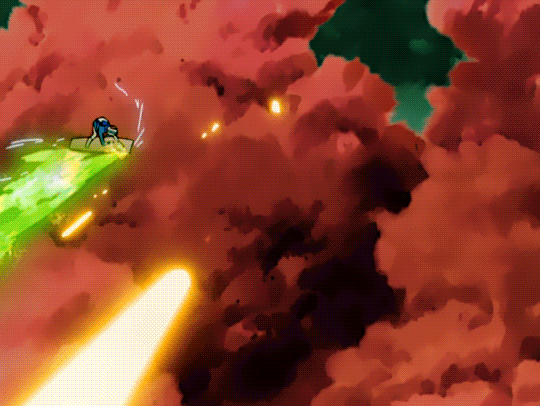
15 notes
·
View notes
Photo

@alexandra-again sorry I tried to respond in the replies but my reply got long, so here it is in full:
Will it take 50 years? Yes and no.
As Steve said in the comic, there will be a lot of downstream effects that will happen much sooner, in, say, 5-10 years. For example, if you are moving your local city government and school board to the left, they are the ones who are deciding on housing, education, police departments, public transportation, and the minimum wage. If you are moving your state government to the left, they are the ones who decide on abortion, voting access, prison reform, etc. All of those things *aren’t* explicitly restoring Roe v Wade, but they will make life better in infinite small ways.
What that will also do, is make it easier to do national-level things. Greater voting access will make it easier to vote in elections for Congress and the Presidency. Greater quality of life makes it easier for people to find the time and energy to vote and to participate in community. One of the problems right now is that the Senate is voted by state (I put this awkwardly in the comic, leading to some confusion -- the state legislature doesn’t vote for US senators, but the people of each state does). If you are liberal-leaning but living in a state that is toxic to you, you have a very big impetus to leave the state, which then leaves increasingly conservative states that continues to have two senators in the Senate. If, on the other hand, local and state level activism leads the downstream effects to make life in that state would be less toxic, then more people would be okay with staying and pushing the agenda even further left.
Also, this sort of state level activism will put progressive people in positions of power when national level things come into play. When the 19th Amendment passed through the Congress, it needed to be ratified by 36 states, and the suffagettes were able to get 35 states to ratify it within half a year, even given the usual pace of legislative crawl. How? It’s because they were already active and ready on the state level in most of the Western states. A lot of the states already had universal, or at least presidential suffrage. Or, if you look at now, a lot of states are poised to ban abortion because the Republicans have spent decades locking up states legislature and gerrymandering the districts.
And that brings me back to the original question -- would it take 50 years to restore Roe? Well, firstly, I’d like to challenge the question itself. Is it that we want to restore Roe, which was a decision made by 7 justices in 1973, or is it that we want to create a more democratic society where the right to bodily autonomy is seen as a basic human right in all the states? Personally, I think it’d be better to actually have something that enshrines reproductive rights (and so many other rights) in law, or, even better, in the Constitution, than relying on who happens to be in the Supreme Court at the moment.
Supreme Court decisions can expand rights quickly, but it can also take those rights away equally quickly. The pre-Roe abortion landscape is pretty complicated, but extrapolating from this CDC report from 1972, there were only 13 states that had relatively unrestricted abortion. (18 if you’re counting in a different way, but a number of states were legal-in-name-only). This is compared to 28 states that had at least presidential suffrage for women in 1919, and the 36 states that had legalized gay marriage by 2015. 13! The Roe decision was a shortcut -- just because abortion was legalized didn’t mean that people’s minds were instantly changed.
And yeah, the long way around *will* probably take 50 years. But (a) when we get there, we’ll have *actually* gotten there -- a constitutional amendment, or a bill that’s passed by a healthy majority in Congress, or >30 states that actually have abortion protections, and (b) we’ll have reaped SO MANY windfalls along the way, in terms of local and state level change.
This stuff takes time, but it is WORTH IT.
#aiyah another longpost#fun fact: did you know that the Roe of Roe v Wade wasn't actually able to get an abortion?#joys of being a test case I suppose -- Supreme Court deliberative process takes longer than a pregnancy#the cdc file is really interesting#though you'll need to hop down to pg 32 and 33 for the charts#you know what i'd like?#a national strategy#someone to say 'hey if you live in x state this is what you should do'#surely the internet can make coordination better
89 notes
·
View notes
Text
TW:// GORE/DISTURBING CONTENT.
(not tagging as mature so everyone can see.)
Character Introduction time!
BEFORE READING!>>>
(FOD is short for Flaws Of Dawn just incase anyone is confused! writing it out every time is tiring!) SOME THINGS ARENT SET IN STONE YET BUT I WILL TRY MY BEST TO KEEP THINGS ACCURATE AND FLUENT!
(keep in mind I'll refer to some areas with placeholder names such as "hybrid area" "demon area" "mortal realm" etc. since not everything is quite figured out yet :D)
Aurora-!
Aurora is essentially Protag #1 in the story, shes a human that lives among the people In the world FOD is set in. As of now she can use magic to summon temporary wings to get across large gaps but they don't last very long and are only used when ABSOLUTELY NECISSARY. She used to live down in the Mortal realm until she was brought over at some point, which she then moved to the outskirts or the "hybrid area" in the woods with a smaller tight knit community.
When Aurora lived in the mortal realm she was held up in her small apartment most the time except for when she either had to go to school or work at her part-time gas station job. All of this changed later on when she'd met Mizuki and she'd essentially had a friendship with with them forced upon her due to a misunderstanding. Why did I even keep talking to her anyway? Later on Mizuki would be the one to bring Aurora over into the realm (FOD) is in.
Somethings not right...somethings off..
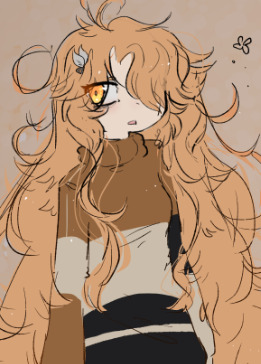

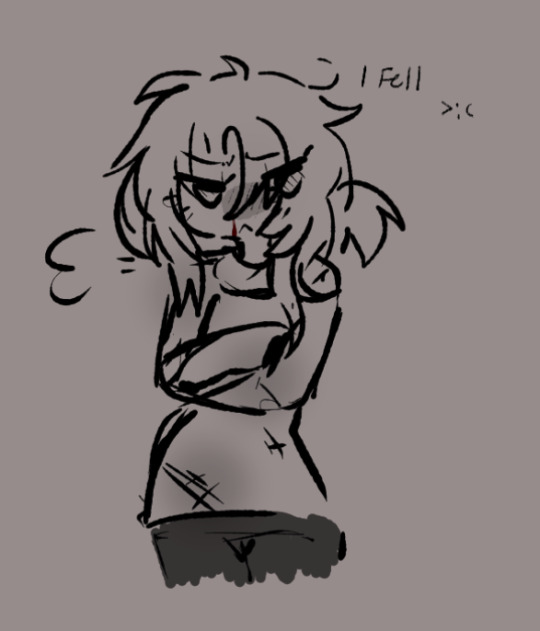
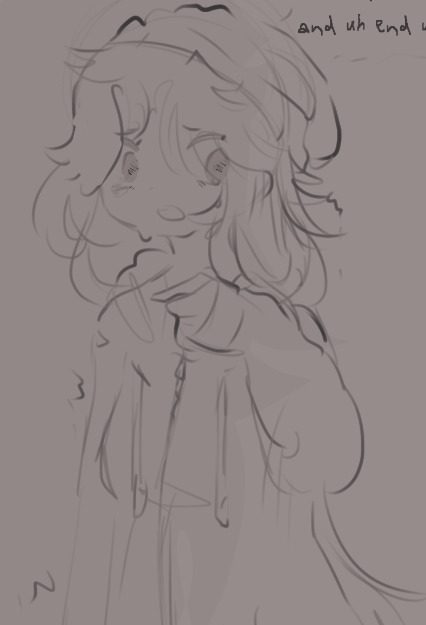
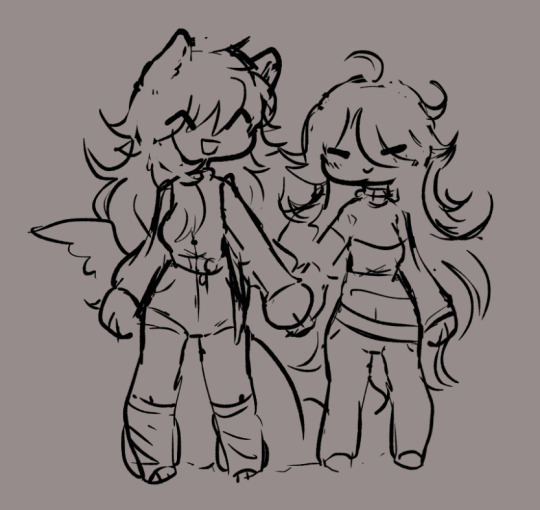
Aswell as Aurora I'd like to talk a bit about Pina and their species as a whole!.
Pina is Auroras pet dragon, They are part of the "Crystallium Dragons", a species which has no gender. These creatures asexually reproduce in the form of "eggs" , these Eggs are actually Mana crystals that absorb magic and energy from the "parent" to form their offspring over the span of around 5-12 months. A dragon that was carried and fed mana by their parent for 9-12 months would grow to be much much larger and stronger than a dragon that was carried only 5-8 since they rely on the mana for their growth as a entity. These Dragons can grow to be 60ft tall (not including wings) OR larger, but, it all depends on the circumstances of how a dragon is formed and the life it leads going forward. These creatures have existed for as long as the land itself has, they aren't dangerous unless provoked and tend to be quite gentle giants if you will :) They have many abilities by "default" such as portals, flying (DUHH), healing magic, ability to "bless" others, Shapeshifting (into more "humanoid" forms), etc. Since I mentioned it!, Yes, the dragons can shift into more humanoid forms, Intelligence/"human-ness" depends on the age, strength, and how often the dragon socializes in their humanoid form with others.
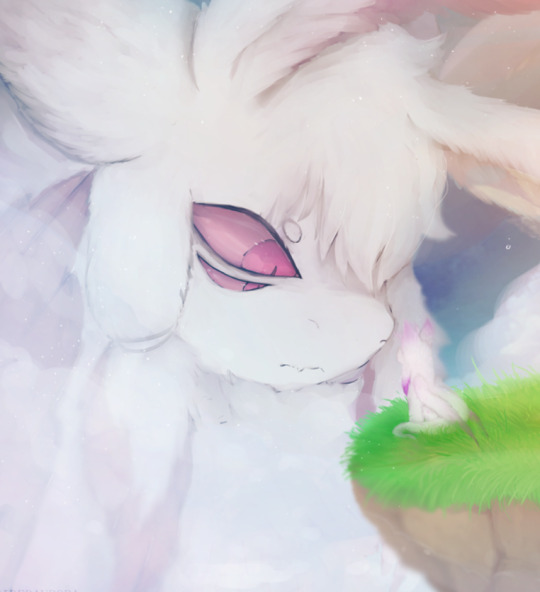
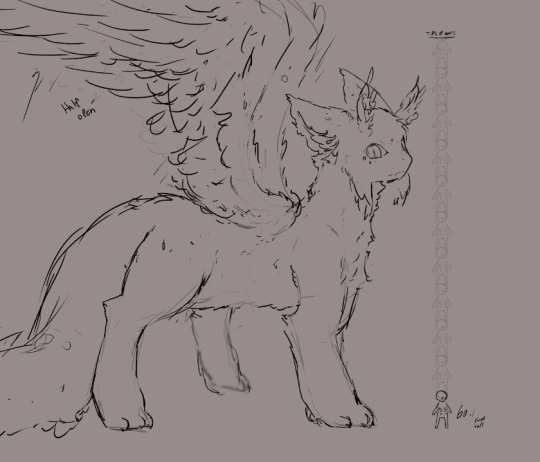
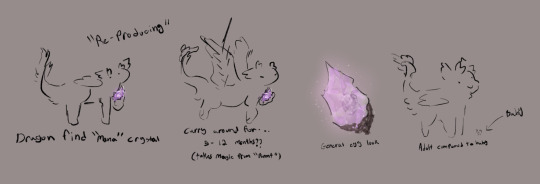
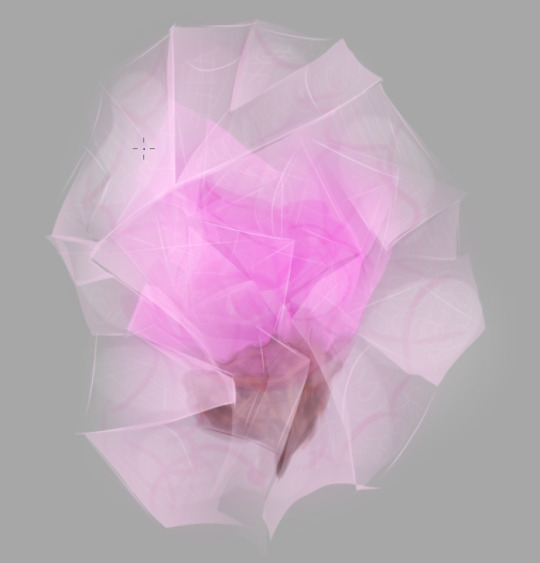
TECHNICAL YAP OVER! TIME TO GET TO PINA THEMSELF!
As stated before, Pina is Auroras pet of sorts. They were gifted to her by Mizuki at some point when they were freshly hatched. Pina is still considered a baby by the dragons time it takes to age so they are quite clingy and generally pretty dumb and silly. They act similar to a dog but also kind of like a bird?? its hard to explain, BUT before Aurora was able to use any magic whatsoever (and still currently when needed) Pina would help Aurora get across the suspended landscapes via gliding to different ledges/platforms, also making portals to random places for her. (Pina don't know how to use their magic properly yet WAAH)
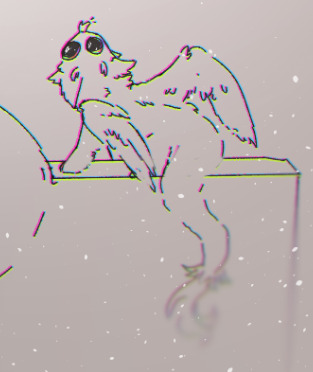
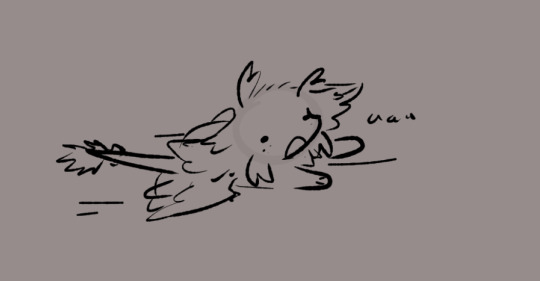
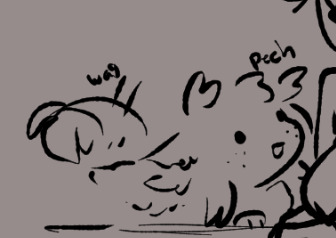
Autumn-? (Protag #2)
Autumn Is a Hybrid fox girl that lives and works directly in the populated areas of the "hybrid area" which is a large cityscape where any species/mix may reside no matter what they are made up of. She works at a small coffee shop/diner to sustain herself in the city. She lived alone in her parents vacation home they rarely use until she'd met Aurora and gave her a place to stay with her. Autumn comes from a larger family having a sister and 2 older brothers and a newly born baby brother. This is common for Hybrids since there isn't many threats for the people to have kids where they stay. She rarely see's her family because shes been off trying to start her life independently in the city, hoping to see the rest of what the world has to offer and explore. She enjoys gardening and studies magic phenomena and language as a hobby.
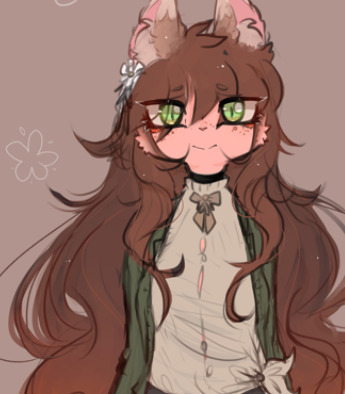
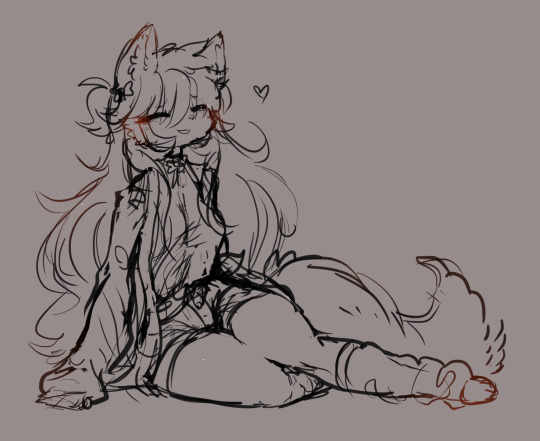
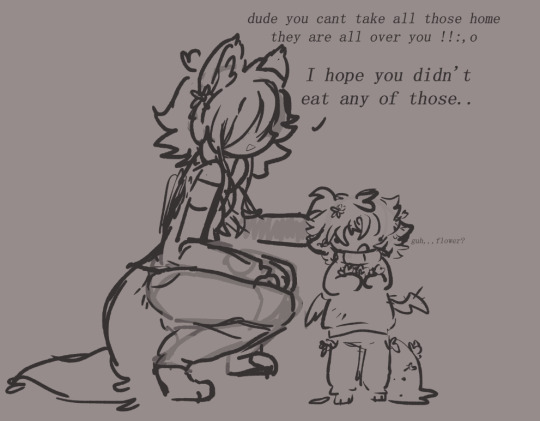
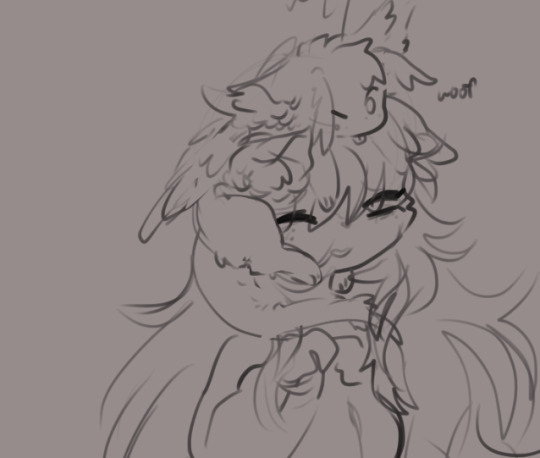
?::-What is the relationship between the three?
Aurora , Autumn, and Pina all live together trying to get by. When Autumn first met Aurora and Pina she had to teach Aurora how to speak the common tongue around (FOD) since she was only able to speak her native language from the Mortal realm. Autumn generally thinks very fondly of Aurora but is a bit hesitant towards Pina due to a dragon related trauma within her early childhood, but she tries her best to look past that and interact with Pina as normally as she can!.
Everything is going to be okay.
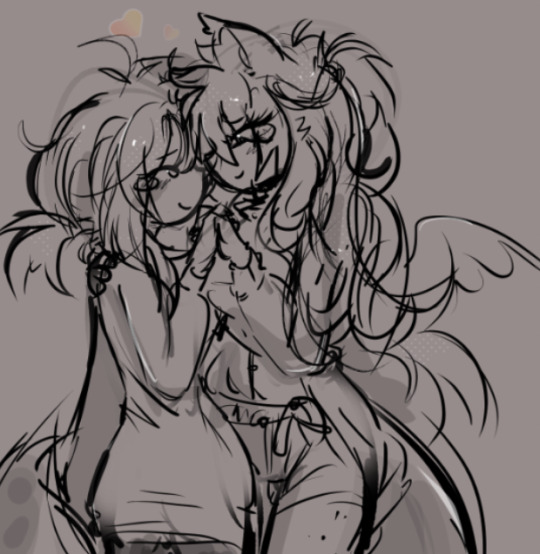
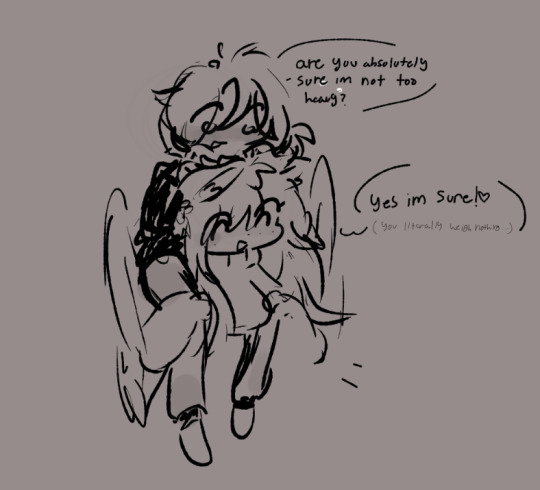

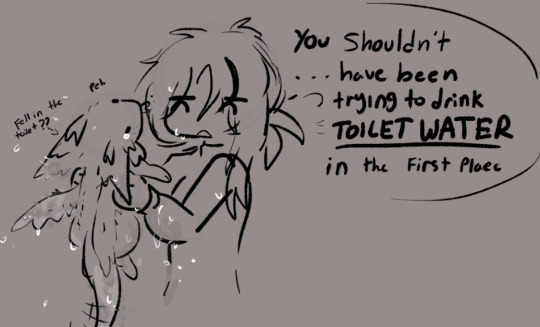
Later on in the story they become devout lovers <33 (Aurora and Autumn!)
Mizuki- ♡ (Protag #3?)
Mizuki Is a Purebred succubus who was raised in nobility with her parents and brother Shoda wasnt there a third one?. She lives quite far away from the Hybrid area, rather being where most "demon" based people reside, The community around her is quite strict with its rules and expectations for whom you speak to, build bonds with, etc. This causes her to have some deep rooted prejudices and dispositions about hybrids since she was taught and shown to be "pure". (Essentially she along with most other demons don't really like hybrids like Autumn since they are made up of alot of different species genetically, unlike demons who are mostly made up of either demon/elf/succubi genes primarily. Some have external species mixed in but it isn't usually in excess.) She commonly travels to the mortal realm to socialize with others around her age, while in the mortal realm she hides her markings/horns/tail/wings/etc. since mortals don't know of the existence of the (FOD) universe. Mizuki would meet Aurora while with a group of friends and later bring her to the (FOD) realm, gifting her the ability to use magic and re-writing Auroras genetics so she could survive the strain of traveling between realms. Aswell as hanging out in the mortal realm she commonly smokes with a group of friends. Mizuki gifted Pina to Aurora to show her affections for her and make everything feel more welcoming.
Why'd I do that?
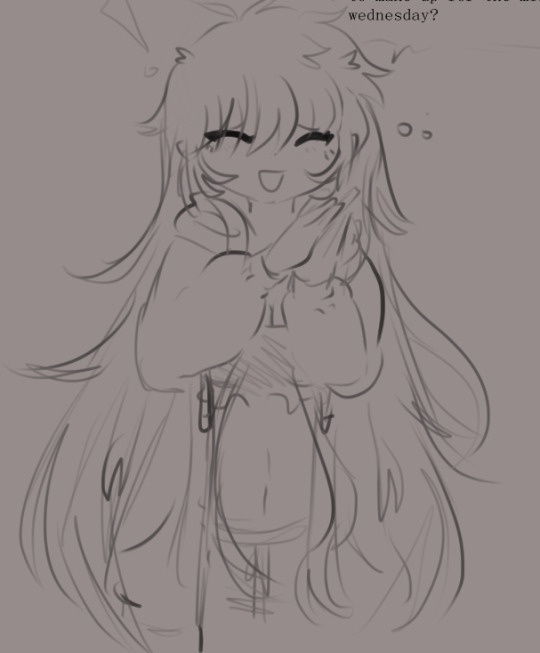

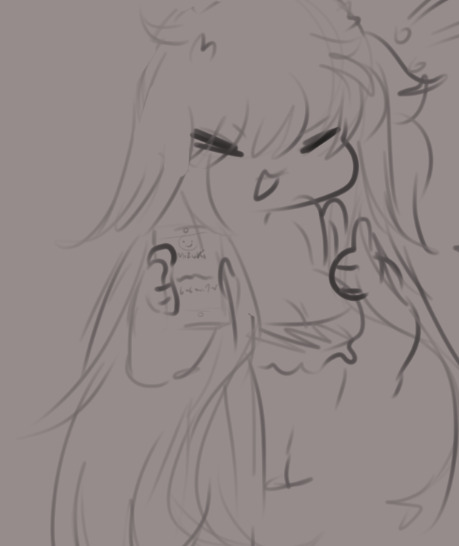

(CONTEXT: Mortals CANNOT travel between realms without the aid of an insider, even if they knew the realm existed and could make a way to travel there the strain of the transition would tear their body apart and cause the person to die. This is why someone would need to give the person a part of themselves/their magic which would then allow them to survive the transition, though they will be quite weak in their realm until tolerance is built or they learn more about how to utilize their magic to adapt.)
Shoda- ♡ (semi-Protag #3.5)
Shoda is Mizukis older brother, He is also a purebred succubus.
Whilst Aurora stayed with Mizuki, Shoda had built a bond with Aurora, offering some solace and comfort after they would argue. Occasionally Shoda would take Aurora into their city to learn more about where she now resides, taking her to parties and to see shops around. Shoda spent most of his childhood ignored once his sister was born due to his disobedience and ignorance of the rules his parents had set for him. In his teenage years he would meet Jackie, whom would become his best friend and later on Dedicated partner to him.
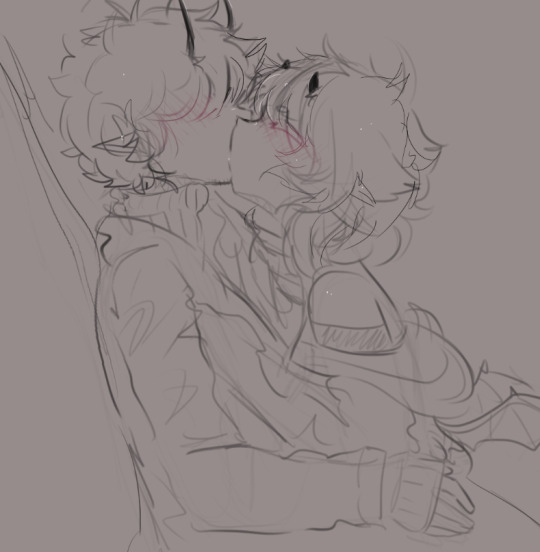
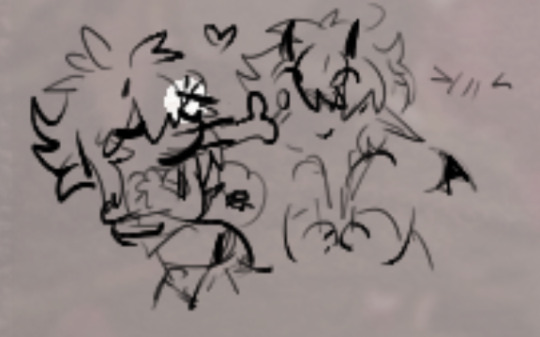

(NOTE. Jackie's introduction is confusing on purpose. C'mon why would I spill everything immediately!)
Jackie-🥩♡♡♡♡♡♡!!!!!!
Jackie Is a Shark/Panther/Succubus hybrid who resides in the countryside area south of where Shoda and Mizuki are (The nobilities city) Her hobbies include... [redacted] ...?, Hanging out with Him!, talking to Him!, Loving Him!, what else would I do?
Jackie grew up an only child with her two parents. She made friends with a girl named Koma in Pre-school!, they would become best buddies and spend all their time together in and out of school, having many playdates and sleepovers!. After an accident Jackie never was able to see her again and left to explore the world on her own. That doesn't sound right, that's not how it went. Jackie would become independent at a young age after her parents kicked her out, she would have to [REDACTED] herself out for others to survive from a young age causing [REDACTED]. Later on once she had the funds to, she would pay to attend a public school away from where she had lived before, this is where she would meet Shoda and quickly become obsessed attached to him. She would spend most of her time from then on with him, besides when she would [REDACTED] in the mortal realm, which she kept a secret from him. You could say she has a preference for fresh meat.
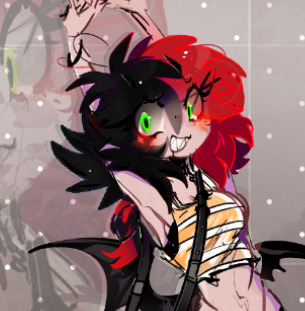
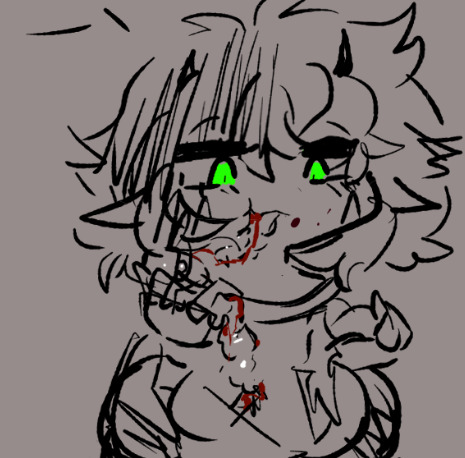

That's all for now.
If you have any questions about anyone mentioned at all, the world, or even characters not mentioned at all (or mentioned briefly) then go ahead and ask away (PLEASE.)
ToyHouse with other characters and info.
#lore#jackie#aurora#autumn#shoda#mizuki#voidedaurora#flawsofdawn#fod#oc lore#loreddump#character introduction#oc
5 notes
·
View notes
Text





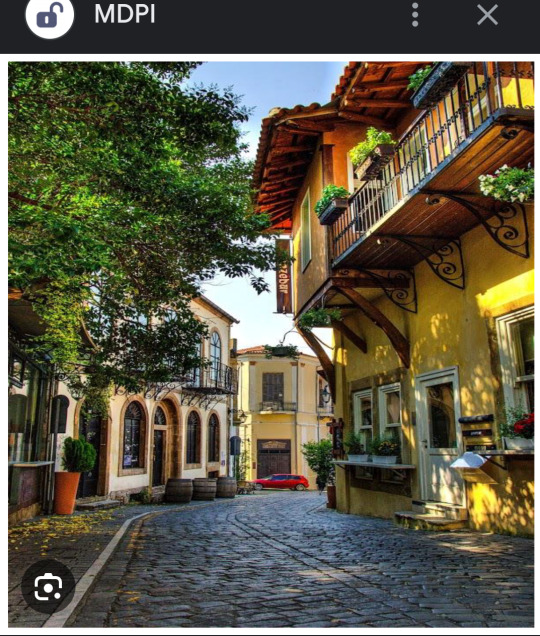

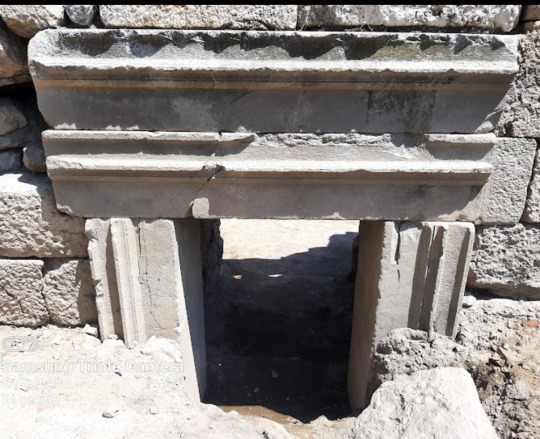

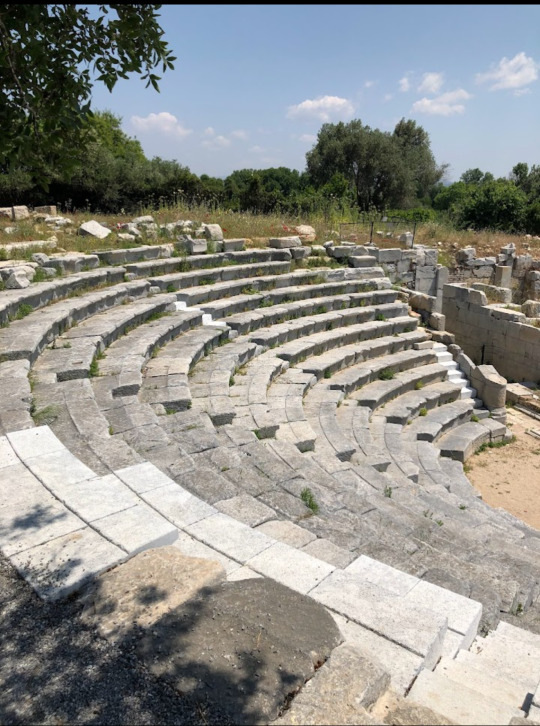
Pics: On "Gaudeamus."
1. Frontpiece to a collection of Anacreon's surviving works.
2. Masterful sculpture of Anacreon 'capturing' his Muse.
3. Map of ancient Thrace, birthplace of Spartacus - a man who couldn't & wouldn't remain a slave.
Even if the only freedom he could find was in death...
4. Thracian national folk costume. The women still perform old styled Greek dances.
5 & 6. Small, colorful Thracian street scenes still dot the local landscape.
7 thru 10. The ruins of Teos, Turkey - with the top of its lion gate, doorway, palace(?) & amphitheater.
1914: "Gaudeamus" Notes -
1. That short story is "Winged Death", which Lovecraft ghost wrote for Hazel Heald.
The "soul stealing" that I mentioned was described as a "change in (the narrator's) personality."
But, come on.
His whole mind was 'magically'(?) transferred into an insect! That would include his so-called soul...
2. I'm of the opinion that none of HPL's narrators can be trusted - at all!
Whatever they've discovered has rendered them insane - & suicidal!!
Every account that they happen to leave behind, were usually written - after - they became mad.
So, in every encounter, the 'alien monster' remains in a mysterious & misunderstood state...
3. The Deep Ones are underwater creatures 1st named in Howard's novella "Shadow Over Innsmouth."
Think of mermen that look like the Creature of the Black Lagoon!
But, this species were "awesomely hinted at" in Lovecraft's earlier short story "Dagon."
I wonder how these mermen are seen in their own culture. Are they sexual deviants or is it a racial conquest pattern or a holy quest or some kind of survival trait?
Also, they must be closely related to humans to be able to successfully mate with us.
But, we still don't know the specifics that allow this to happen...
4. This story is the great "Under the Pyramids." The novella was sold to readers as a 'real life' adventure that Houdini "actually lived thru."
But, other sources claim Howard had already penned the story & that Houdini was interested in being the tale's protagonist.
At that moment, 2 great minds did think alike...
5. Harry Houdini is the still fondly remembered Stage Magician, Public Escapist & Fake Spiritualist Buster!
(That last remark makes it seem like "real" spiritualists are out there some- where. Sorry, I 'see' that they're not.)
Houdini was planning for a sequel to "Under the Pyramids" - just before he died.
A Canadian fan asked Houdini if he could actually take a hit to his gut & remain unphased!
Harry said yes & the guy sucker punched him unexpectedly!
Since Houdini had not had time to prepare his muscles, the blow ruptured his appendix!!
Nine days later, Houdini died.
In typical fashion, for him, Houdini vowed to contact the living - if he found it at all possible!
Since then, on the day of his death, some family & fans have waited for him to 'escape' death itself...
6. Gaudeamus is Latin for "let us (enjoy)." This was sometimes spoken as an invitation to eat - before rich Romans gorged & vomited their usual meals.
Ugh...
7. HPL's main revisions for Zealia are: "The Curse of Yig", "The Mound" & "Medusa's Coil."
But, it's thought that Lovecraft re- wrote other works for her. Even though she specialized in romantic stories...
I don't yet know why she suddenly wanted to try the weird fiction market at this time.
To be followed up much later...
8. A tankard of warm British ale?
Tankards are drinking cups with 1 handle. They are usually made of silver, pewter - even hardened leather!
In earlier centuries, most pewter cups contained lead - which led to drinkers suffering heavy metal poisoning &/or gout!!
Strangely enough, the acids in hard cider speeded up these poisonous effects!
As for traditional British ale, it's known as top fermented cast (or real) ale.
This means that it finishes maturing in a pub's cellar & is only served with natural carbonation.
9. Though this line has to do with time's illusory 'passing', I can't help but think there's some hint of Howard's "Decline of the West" fixation in it.
10. Anacreon was an ancient Greek lyric poet best known for his drinking songs & erotica!
Lyric poets of that time, usually composed joyous religious hymns.
Ouch...
Though born in Teos, Asia Minor (in today's Turkey) he moved to Thrace, an area in northeast Greece.
Sadly, only fragments of his works have survived to this day...
11. "God split me!", translates as "God strike me down (if I am lying)!"
But, it also has an element of defiance to it...
12. Red nose (aka "rum blossom" & "whiskey nose") is actually not directly caused by alcohol!!
Rather, such facial redness is actually more related to rosacea, which affects the blood vessels in one's face.
A red nose can also be caused by sudden flushing, lupus, inflammation, allergies, etc...
13. "White as a lily" here, references a corpse's color - due to blood loss.
But, it's usually used to mean "pure, perfect, uncorrupted or blameless, innocent."
Not so of the Lily-White Movement in 1888, where Republikkkans tried to oust African-Americans from leader- ship positions in the Texas Republican Party - by inciting riots!!
So, Republikkkans have always been acting like this...
Lily White is now used sarcastically for white people as a whole. Like white bread or paleface...
14. HPL's always felt that he had been born too late. He preferred the 1700s, thinking of it as England's "Golden Age."
Perukes (wigs) have been part of the professional, high status jobs of judges & lawyers since the 1600s.
They are also worn in Parliament, as a sign of authority.
15. Chaff usually means "the cast off husks of grains seeds."
But, it's also British slang for "teasing" or "good natured banter."
There's a Biblical chaff, in Matthew 3:12, which describes "those who enjoy the sacraments, but are not solid..."
Guessing here, "Folk who go to church but, don't act in a Christian manner?"
16. Quaff, "to drink (an alcoholic drink) in a hearty manner."
Has some great synonyms: attack, lap, force down, drain, carouse, sink, kill, slug, knock back, take a drop, wet one's whistle, crack a bottle, murder, bit, sot, etc...
Most of which describe drinking too much - or, not enough!
17. A teetotaler is someone who never enjoys any alcoholic drinks.
In the 1920s, a tolerance movement of teetotalers (made up of Protestants, Progressives & women) actually made liquor illegal!
But, this led straight into the violence of the Prohibition & the quick growth of the Mob...
(Oops, the curse of unintended consequences strikes again!)
Today, overdrinking is treated as an addictive medical problem.
18. Usually "any diabolically evil & cruel devil, demon, person, etc..."
But, here it means Satan, the ultimate Christian Boogeyman!
19. Your lips & face turn blue - if your blood has little oxygen in it.
This is caused by poor circulation or, worse, if one is unable to breathe.
It warns you that someone's choking or has drowned...
Also, cold temps can narrow one's blood vessels. But, a gentle massage of the affected area, make it return to a normal blood flow.
Weird Bit: Why does it make me think about blue-skinned Indian Gods & those Thuggee highwaymen who strangled their victims to death...
(The blue color personifies the depth & vastness of sky & sea for Hindus...)
20. Summon? A chair?
Is this some drunken royal command?
Or, worse, the magical summoning up of possessed or demonic furniture?
Pleasant dreams, eh?
(Yeah, it's now sharing your bed...)
3 notes
·
View notes
Text
Cleaning my mind out tonight if all the trash I’ve been letting litter it honestly , I love my body and my mind and my soul like the earth it is so beautiful
Watched Sabian symbols videos with Eliza
And hung out with Katie who has a cult like Christianity vibe to her but also saw things from my eyes in a lot of ways she’s beautiful her dream about her grandpa
Please Sam do not be afraid I am being reformed refashioned recalibrated for the next chapter of my journey in a fresh stance and state
What I am feeling and experiencing outward is what I am experiencing on the inside
Maintain my balance and ground myself in any way I can
Lengthy process testing my resolve
Hold fast rather than to waste the precious resources of my energy on fear
There is a time to fight and a time to observe
This is that time
To watch the defenses my ego is mounting
As control is taken from it
And handed over
To the highest vibration of myself
I am becoming my ascension embodied
Fully formed
Fully fleshed
My human mind is struggling to come to terms with
The perceived foe is the ripple affect
All the efforts I have made up until this point in time
To improve the state of things
Only now
My body and my internal landscape are catching up with this
I am already on another timeline and I am being pulled through the fabric of space
At a slow rate
Due to the nature of my material density on this plane
To that place that is
Ever closer to the destiny
I have successfully made available to myself
Up until this point
There is no way to rush this process and nothing I can do to speed this up
It must take place organically
So I am guided to breathe and feel that fear
Feel that fear and breathe through it
Practice meditation daily
Take my time
Be meticulous with these. Details
Whatever I am being called to focus on
Whatever I must put on the shelf for the moment
That is the way forward
This is not an hour to question
But to follow the instinct of my higher self
As it choreographs then way forward
And the repositioning
Of how I move through the world from this point forward
I am becoming the reward of which I was seeking
This is the hard part in the physicality
But in spirit I am already victorious
It is just a matter of stretching my consciousness ever so slightly
In what feels like enormous ways
To hold that vision of reality
Until I look around
And it is right before me
Because I am it.
Reach up for guidance
Reach inward
Trust the nudges that I get and the ever changing needs that I will experience on a day to day basis
Try not to fret
All will write itself
I will not be in this state of discomfort forever
I am being retrofitted with badges on an energetic level that others will be able to recognize subtly
That give the indication of where I have been and what I have chosen and what I have endured and how that has shaped me into the now
This is a right of passage
And a completion of my initiation in many ways.
Though there is more learning and growth to do
I have wrapped up a significant phase which was not easy
Many do not reach this place where I am at now
So I take a moment to celebrate myself…
And how I with all determination pressed forward even when the odds were stacked against me
Flow as best as I can at this time.
Hear the fear and let it fall away right around the corner and in just a short while all those protests and all of those imaginings
That are brought about from deep within
About the nature of this particular moment
These things will no longer bother me
I will no longer be affected
Because I will see in form
In real time
The proof of this doorway
That I have created
And that I am being created into
And through which
The new
And highly sought after version of me
Will step forth
Once and for all.
7 notes
·
View notes
Text
Week 1
BLOG PROMPT: Describe your current relationship with nature. How has this developed/evolved? Who offered you “a sense of place,” as described in our textbook?
Hello, my fellow nature interpreters!
I look forward to getting to know you all through sharing our thoughts on Tumblr – I honestly forgot this platform even existed! Nonetheless, I wish you all luck in your studies and am excited for this semester with you!
Do you guys ever think about the things that have shaped who you are and your interests? What influences and experiences made me who I am today? If you’re anything like me and coming up to your ‘quarterly-life crisis’, you might spend countless hours pondering (and stressing) over who you are and what you’re meant to do; what is going to bring me happiness and a sense of meaning? At least for me, I think this is where the natural world comes into play in my life.
Let us begin…
For as long as I can remember, I could always be found reading some book or encyclopedia on wildlife. I’ve always been fascinated by animal behaviour, animal physiology, wildlife conservation, and pretty much anything animal-related. Was anyone else obsessed with BBC’s Earth nature documentaries? I would argue that David Attenborough must be one of the best nature interpreters of our time. He encapsulated millions by sharing breathtaking landscapes and all the life that depends upon it. His impassioned rhetoric brings meaning to conservation efforts and displays the beauty of our home. His documentaries profoundly enriched my admiration and awareness of the fragility and adaptiveness of nature. As I grew older and as my knowledge of animals expanded into the natural world and the environment, I began to notice the interconnectedness of life; I learned of issues our planet was facing, such as how climate change was affecting wildlife and biodiversity, the inequalities and ethical concerns found within so many industries, and most importantly, how utterly crucial it is to protect our beautiful little planet.
After the release of several articles all over social media explaining that we are in the ‘decisive decade’ and on the brink of the sixth mass extinction, there seemed to be nothing but bad news everywhere. Essentially every article and social media post alluded to the idea that humanity is doomed and that we’ve completely screwed up our planet. I honestly struggled with a lot of anxiety around this, and I took this issue personally (and still do).
On a side note, I like the idea that amongst chaos and ruin, nature and life on Earth will continue to rebuild itself – maybe we can look at times of hopelessness and chaos in our own lives this way, we are forever transforming and learning, perpetually being rebuilt despite it all. I think if we all look at nature as our friend instead of trying to be separate from it and viewing it as a commodity to be exploited we can instead appreciate our planet, and then perhaps we can save it too.
While I always felt that anything I did would be insignificant in the grand scheme of things, I still do my best to live more sustainably and try to encourage others to do the same. After having such a defeatist mindset about the state of our planet for quite some time, I would say I grew quite proficient in appreciating the natural world around me and am in constant awe of its resiliency. If you pay attention to the beauty of it all, you too can feel a little more at peace. Take a minute to look up and be captivated by the stars at night, isn’t it neat that the longer you look, the more stars that seem to appear? Study the intricate chevron markings on the legs of a grasshopper. Stick your arms out and feel the heat from the sun on your skin and the wind blowing across your face. We come from nature, it is ingrained in who we are; so take a moment to be present and admire what our wonderful world offers – I hope it brings you as much peace as it does me.
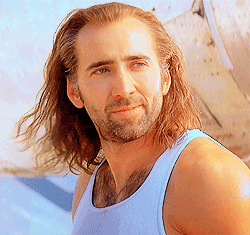
3 notes
·
View notes
Text
a year or so ago i posted this on my previous blog & have finally found it, so here is part one of the soundtrack to remilia’s life aka before the main questline of skyrim begins .... i hope u enjoy <3
before the title reveal [ . . . ] title reveal. skyrim's main theme by taylor davis (cover).
SCENE . . . begins overlooking a vast flowing field, of soft greens & hazy violets. springtime breezes stir the tall grass & lavender stalks with lover's caress as the beginning of the cover plays. a young woman appears before the camera, back to us as the audience. with dark, dark hair to her hips, braided messily but with care, simplistic dress of white close to body & feet bare of shoes. one hand comes to brush against nature before her, & the camera pans upwards, around, to her face. eyes of green fire meet ours, & the theme picks up, as if saying: ah, here she is! our girl, our hero. camera continues to rise, up up up to the pale blue skies—thus title is revealed [0:41], & then a line from a poem fades in. it reads:
CHORUS: o, sad one. some heavy god has put more pain on you than any other human being.
the beginning. talia's theme by two steps from hell.
SCENE . . . begins pitch-black. howling winds, mournful & cruel. night sky is shown, pale stars barely evident under blanket of darkened clouds & blanket of night. howling winds fade & theme begins as we follow a snowbank up to a tiny, ramshackle barn of rotting wood & rusting nails. upon a straw pillow—oh, how scratchy & uncomfortable it looks—& with a lone wool blanket 'round frame, a young woman sits within barn; the same young woman from before, but more frail, more terror-ridden, more frightened prey even with no predator in sight [0:18]. a blackbird with its beady, all-knowing eyes stares from windowsill, cloaked in darkness. her eyes are closed for a moment, then open & lift to the landscape outside. her knees are pulled towards her chest, head leaning on arms, mesmerized by sights & sounds of a rare winter upon the land of high rock [0:25]. lonely, lonely, lonely… she is terribly lonely. is this all there is? is this all there will be? same blackbird is our camera, flying out & back to the sky [0:32], beginning its roam over the village. not a soul is out, & all lanterns are extinguished. then: pitch-black once more.
the dreams (visions?) begin [ . . . ] the divines call! prologue by ramin djawadi.
SCENE . . . where are we? where is that young woman? it is unknown as of yet where we are, what we are seeing; what we are supposed to be seeing. a cave, perhaps? deep within the earth? coal-black walls, yet cracks reveal bright, scarlet fire, or mayhaps molten lava. [0:00 - 0:46] then, a monstrous roar, a shaking of the screen! a voice, a language guttural & powerful & ancient. dovahkiin! somewhere within the depths, there rises a cacophony of a girl's screams & wails & sobs. we, as the audience, know only one concept from what we are given: everything is hurting, everything is burning, & everything is changing. nothing shall be the same again.
NOTE . . . this theme plays all the way through, the ferocity of the flames & the shaking of the screen growing stronger & stronger as do the wails.
awakening [ . . . ] where are you, child? fate awaits. eastern path by vangelis.
SCENE . . . the young woman is back in our sights. she is in a restless state of sleep-wake, eyes moving rapidly under thin lids, bottom lip quivering & brow furrowing. expression of terror & despair stays frozen 'pon delicate features, sweaty & flushed. awakening with a startle, her chest heaves & she gasps for air, hand coming to bosom as if heart hurts. despite the almost-freezing temperatures she has lain in, she feels as though she is on fire; as though her body, her soul itself, is aflame. tunic-dress is ripped off with violent, frenzied movements, though nothing is shown except her bare back. a call to run, to move: she knows not where she shall go, but she knows she cannot stay here any longer.
journey begins [ . . . ] fate will not wait for thee. wandering jane by dario marianelli.
SCENE . . . o'er hills, o'er ice-lands. the journey is not pleasant, nor kind. weather does not sympathize, nor do the gods wait. she stumbles, she falls, she rises. she cries into her palms, she skins her kneecaps, bruises her body, speaks to no one but the watching wilderness & watching moons & sun. yet she falters not, for fate is a rope 'round ivory neck, & it pulls her ever-forward.
border of change [ . . . ] border of rebirth. winter by paul halley.
SCENE . . . the crone who took her in, brought her away from death's arms, spoke in prophecies with glazed hues of the bluest blue. in a language unknown to all but the pillars of reality itself, she asks: what is your name, girl? & thus the girl speaks: remilia. secret revealed: it has been her fate since her birth, since before her birth, since before her great-grandmother's birth, before her great-great-great-great-great-grandmother's birth: this prophecy. she feels the heaviness of the world upon her frail shoulders, feels the burn of the rope of prophecy upon the tender skin of her neck, threatening to hang. from past to present to future untold: it is her duty to defeat the great evil that shall follow her to the ends of time. only one shall survive, & it must be her. sobs escape her mouth as she dashes out of the tent. falling to her knees, she lifts her head to the sky & gives a soundless scream of why? why me? i am nothing, i offer nothing. please, this cannot be given to me.
NOTE . . . as soon as the woman looks up from remilia’s palms & says but one phrase — you are the last dragonborn, it must be you — in her quiet, slow voice, the scene cuts to the tent flap being shoved open, as if the poor girl cannot get out fast enough.
stages o' grief unfolded, denial [ . . . ] must i truly do this? once upon a december by emile pandolfi.
SCENE . . . she has not written much before. though taught by those in the village that saw & pitied her, she has not had need nor want to simply sit & write. her letters are small & a bit lopsided, the ink messy from where she pressed too hard on certain strokes, & while she tries to angle her head away when tears begin to flow, they too stain the paper. it is a note of leaving: a thank you & goodbye to the woman who saved her life & taught her so much; of the gods, of the land, of survival, of what she must endure.
stages o' grief unfolded, acceptance [ . . . ] yes, i must. under an ancient sun by jeremy soule.
SCENE . . . evidently, some time has passed: perhaps a day or two. dawn arrives, with birdsong & breeze. we see nothing but the whiteness of snow, as far as the eye can see, mountain-tops & pine trees. the crackling of snow underneath footsteps. then, a fur-lined boot comes into view. the camera rises to her face: she is nervous, terrified even. but her mouth is set into a tight line, her brows furrowed. she raises a hand to the amulet of kyne now lain ‘round her neck: a gift from the woman before. with a shaky inhale, her journey begins.
NOTE . . . the music is already playing by the time the sun breaks over the mountains. it continues on.
#wrote this like a movie script i hope it looks okay JHBFSJDSD#i gave some timestamps to help you visualize!#please read through this as u listen!!! pretty please <3
5 notes
·
View notes
Text
The Time Machine by H.G. Wells
Chapter 13
The Trap of the White Sphinx
“About eight or nine in the morning I came to the same seat of yellow
metal from which I had viewed the world upon the evening of my arrival. I thought of my hasty conclusions upon that evening and could not refrain from laughing bitterly at my confidence. Here was the same beautiful scene, the same abundant foliage, the same splendid palaces and magnificent ruins, the same silver river running between its fertile banks. The gay robes of the beautiful people moved hither and thither among the trees.
Some were bathing in exactly the place where I
had saved Weena, and that suddenly gave me a keen stab of pain. And
like blots upon the landscape rose the cupolas above the ways to the
Underworld. I understood now what all the beauty of the Overworld
people covered. Very pleasant was their day, as pleasant as the day of
the cattle in the field. Like the cattle, they knew of no enemies and
provided against no needs. And their end was the same.
“I grieved to think how brief the dream of the human intellect had
been. It had committed suicide. It had set itself steadfastly towards
comfort and ease, a balanced society with security and permanency as
its watchword, it had attained its hopes—to come to this at last. Once,
life and property must have reached almost absolute safety. The rich
had been assured of his wealth and comfort, the toiler assured of his
life and work. No doubt in that perfect world there had been no
unemployed problem, no social question left unsolved. And a great quiet
had followed.
“It is a law of nature we overlook, that intellectual versatility is
the compensation for change, danger, and trouble. An animal perfectly
in harmony with its environment is a perfect mechanism. Nature never
appeals to intelligence until habit and instinct are useless. There is
no intelligence where there is no change and no need of change. Only
those animals partake of intelligence that have to meet a huge variety
of needs and dangers.
“So, as I see it, the Upperworld man had drifted towards his feeble
prettiness, and the Underworld to mere mechanical industry. But that
perfect state had lacked one thing even for mechanical
perfection—absolute permanency. Apparently as time went on, the feeding
of an Underworld, however it was effected, had become disjointed.
Mother Necessity, who had been staved off for a few thousand years,
came back again, and she began below. The Underworld being in contact
with machinery, which, however perfect, still needs some little thought
outside habit, had probably retained perforce rather more initiative,
if less of every other human character, than the Upper. And when other
meat failed them, they turned to what old habit had hitherto forbidden.
So I say I saw it in my last view of the world of Eight Hundred and Two
Thousand Seven Hundred and One. It may be as wrong an explanation as
mortal wit could invent. It is how the thing shaped itself to me, and
as that I give it to you.
“After the fatigues, excitements, and terrors of the past days, and in
spite of my grief, this seat and the tranquil view and the warm
sunlight were very pleasant. I was very tired and sleepy, and soon my
theorising passed into dozing. Catching myself at that, I took my own
hint, and spreading myself out upon the turf I had a long and
refreshing sleep.
“I awoke a little before sunsetting. I now felt safe against being
caught napping by the Morlocks, and, stretching myself, I came on down
the hill towards the White Sphinx. I had my crowbar in one hand, and
the other hand played with the matches in my pocket.
“At that I stopped short before them, hesitating to enter.
“And now came a most unexpected thing. As I approached the pedestal of
the sphinx I found the bronze valves were open. They had slid down into
grooves.
“Within was a small apartment, and on a raised place in the corner of
this was the Time Machine. I had the small levers in my pocket. So
here, after all my elaborate preparations for the siege of the White
Sphinx, was a meek surrender. I threw my iron bar away, almost sorry
not to use it.
“A sudden thought came into my head as I stooped towards the portal.
For once, at least, I grasped the mental operations of the Morlocks.
Suppressing a strong inclination to laugh, I stepped through the bronze
frame and up to the Time Machine. I was surprised to find it had been
carefully oiled and cleaned. I have suspected since that the Morlocks
had even partially taken it to pieces while trying in their dim way to
grasp its purpose.
“Now as I stood and examined it, finding a pleasure in the mere touch
of the contrivance, the thing I had expected happened. The bronze
panels suddenly slid up and struck the frame with a clang. I was in the
dark—trapped. So the Morlocks thought. At that I chuckled gleefully.
“I could already hear their murmuring laughter as they came towards me.
Very calmly I tried to strike the match. I had only to fix on the
levers and depart then like a ghost. But I had overlooked one little
thing. The matches were of that abominable kind that light only on the
box.
“You may imagine how all my calm vanished. The little brutes were close
upon me. One touched me. I made a sweeping blow in the dark at them
with the levers, and began to scramble into the saddle of the machine.
Then came one hand upon me and then another. Then I had simply to fight
against their persistent fingers for my levers, and at the same time
feel for the studs over which these fitted. One, indeed, they almost
got away from me. As it slipped from my hand, I had to butt in the dark
with my head—I could hear the Morlock’s skull ring—to recover it. It
was a nearer thing than the fight in the forest, I think, this last
scramble.
“But at last the lever was fixed and pulled over. The clinging hands
slipped from me. The darkness presently fell from my eyes. I found
myself in the same grey light and tumult I have already described.
11 notes
·
View notes
Text
June 7 - Mt. Takao
While last days mountain excursion was mainly done on vehicles (our trip up the mountain was on ski rail today), traversing across Takao Mountain was a true treat. After we got off the ski rail we walked a good distance vertically, and along the path we were able to see the beautiful mountainous landscape that spreads out as far as the eye can see. When in the city of Tokyo because of the air pollution a veil clouds these mountains, but being at the peak of the mountain let the scale of land set in. The shrine itself was gorgeous, and my favorite to date. The mountain was originally home to a Shinto shrine, but after an ascetic Buddhist had a vision the kamii god who was enshrined on the mountain was revealed to also be a bodhisattva. As a result along with the Shinto shrine, there is a Buddhist temple. At the Buddhist temple we heard the monks chanting their sutras, and the song was quite beautiful. After reaching the peak with some friends we hiked through one of the trails before merging with the main path. Once we got on the main path Nico, Riki (our guide) and I ran down the mountain (I was in sandals). It was quite a long run but it felt good to get some exercise in after being off for so long. Once we reached the base of the mountain I treated myself to some soft serve! Now I’m going out with some friends to celebrate one of their birthdays. I’m gonna go all out on some nice wagyu steak.
Academic Reflection
Today’s reading dealt with forestry as it pertains to Japan looking as far back to Nara period. No real policy existed until the Tokugawa period, resulting in massive ecological damages that accrued overtime as timber was over exploited with no action taken to let the forest heal. This was issue continued to grow, until it came to a head after the Warring State period, with policy meant to restore the forest being implemented. It should be noted that this policy wasn’t meant to protect nature for the sake of it, and was always viewed through a human centric view (however the Japanese did understand that they needed a healthy environment to be able to live). While policy changed greatly through the Tokugawa what finally became implemented was a series of land use rights surrounding a plantation forestry system which allowed forest to grow back while still remaining productive.
The natural beauty of Japan continues to strike me. Lucious trees cover almost every space that doesn’t have buildings, and it was a result of this focus towards agronomy from an early period in development. I really wish the US would take some notes from Japan on this manner. From the readings the understanding of a healthy forest as almost providing cyclical support for humans and the greater environment so far back in time was surprising and it makes me wonder with the knowledge we have today how we continue to fail nature in this respect. The payoff of this policy was evident in our excursion as almost every surface in the mountain landscape was covered in beautiful green trees. The same could be said for Hakone, except for the ducts of sulfur and the area surrounding that.
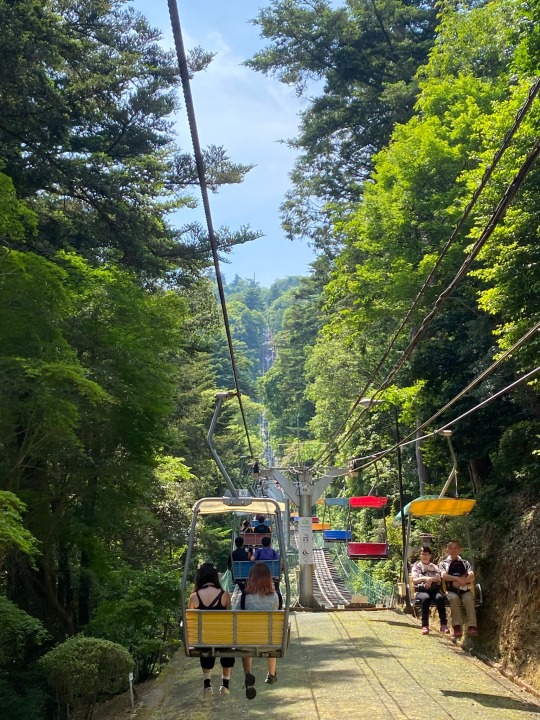


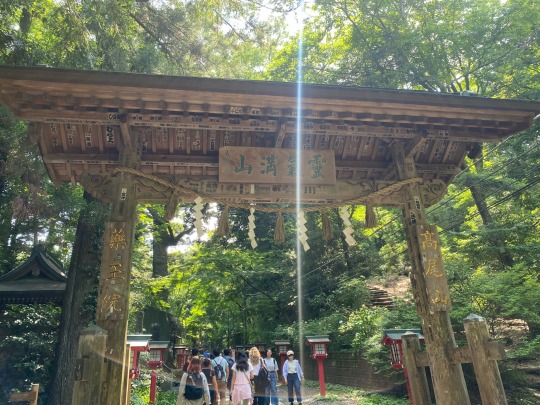

2 notes
·
View notes